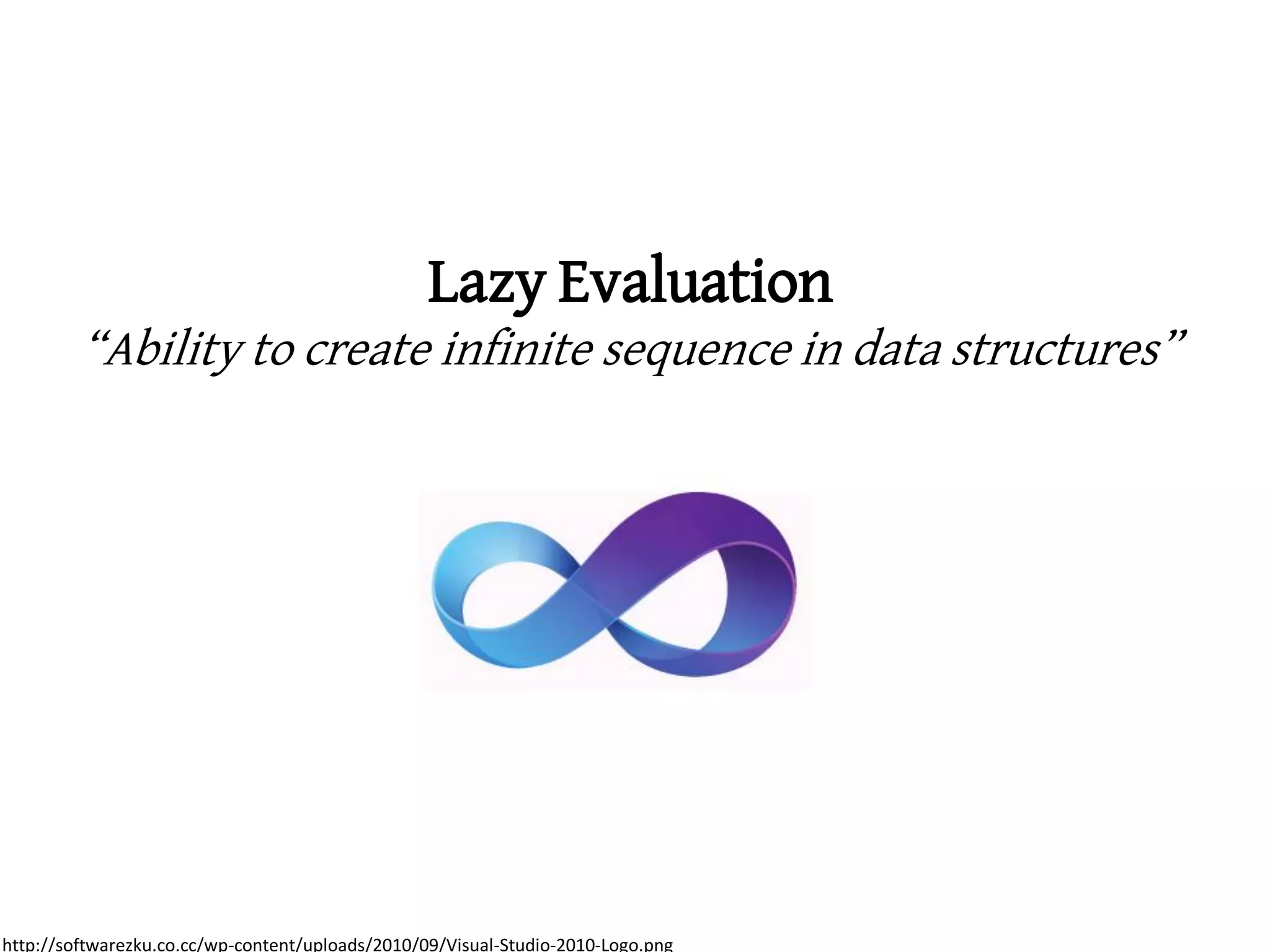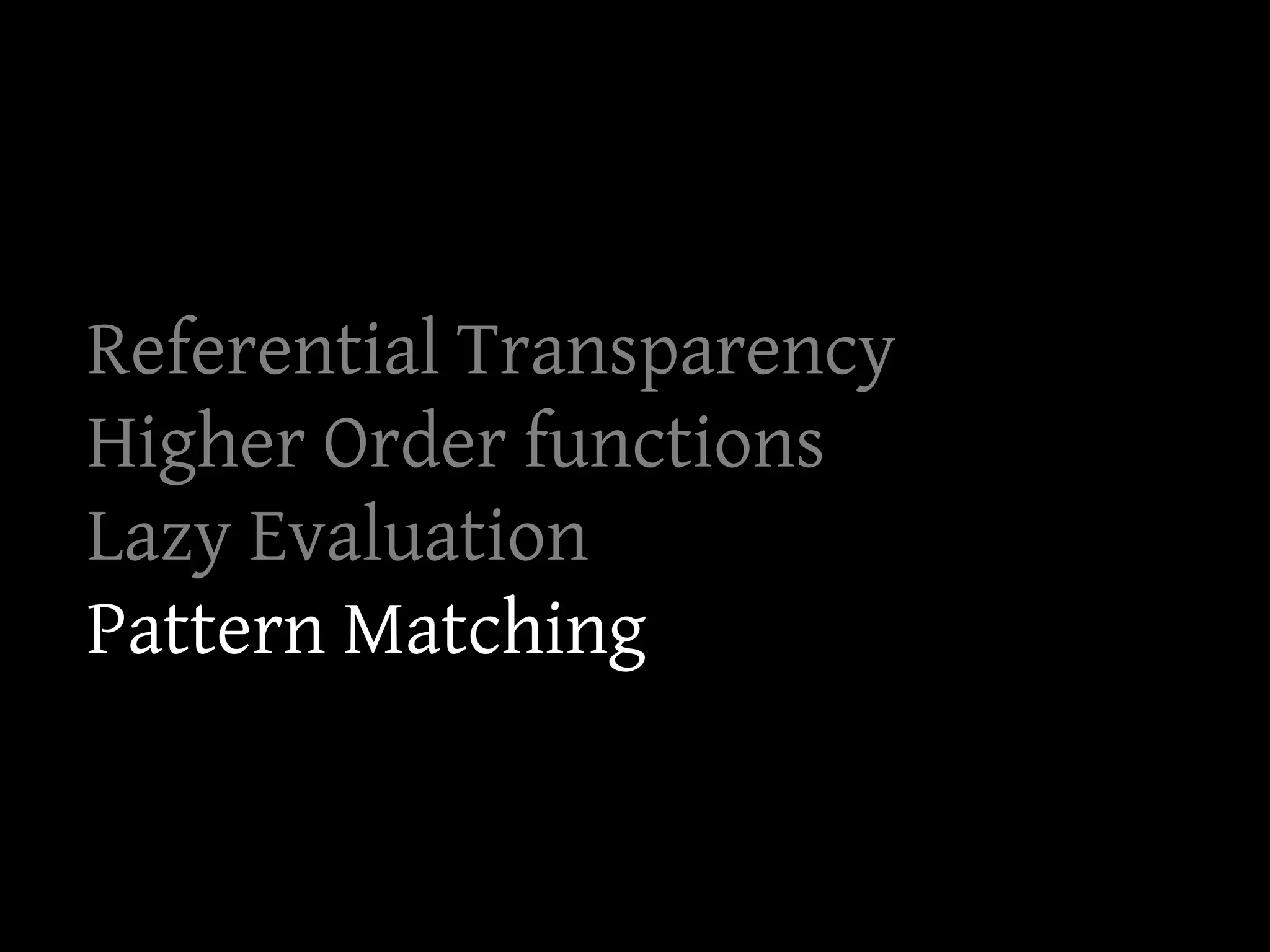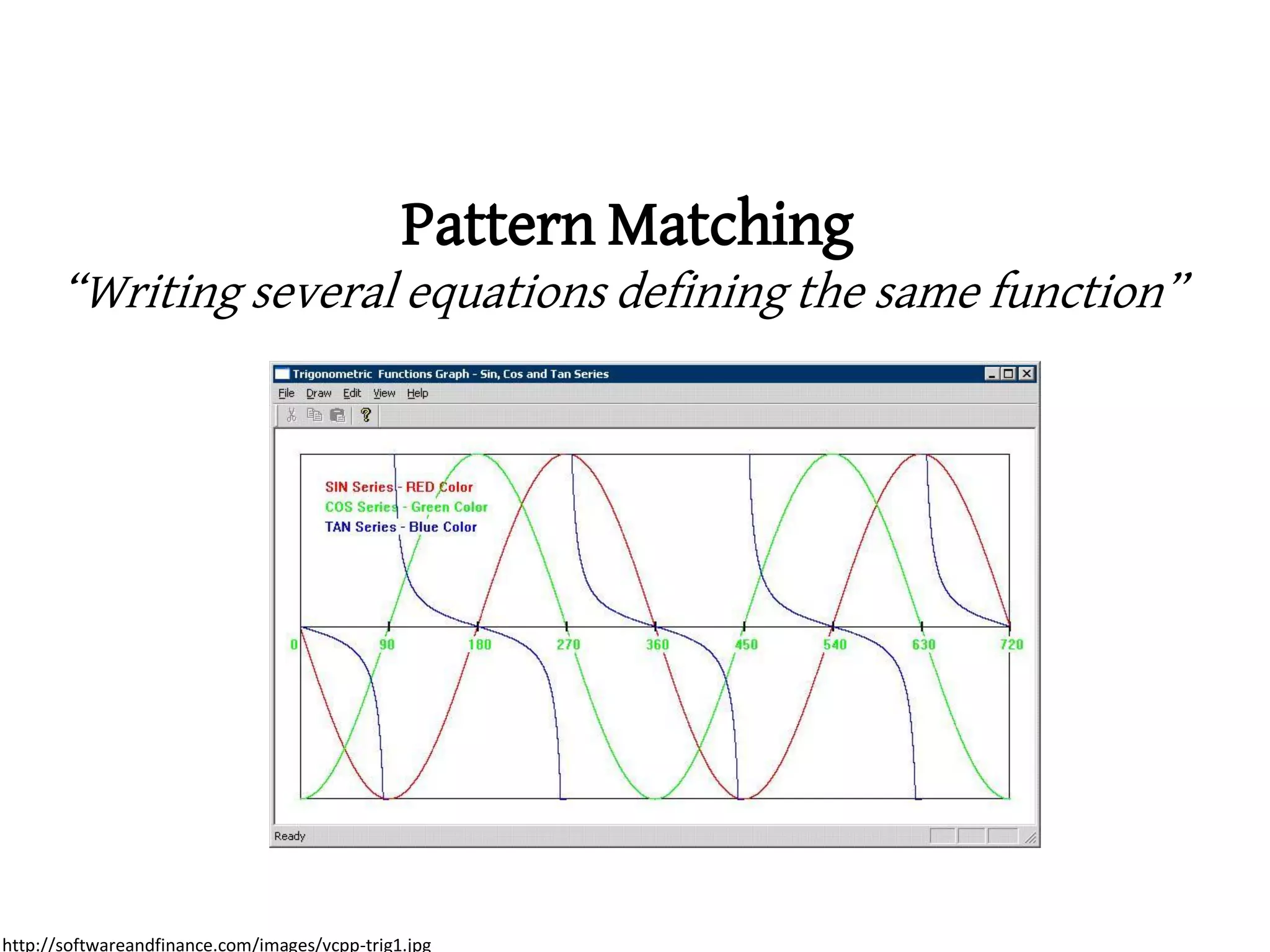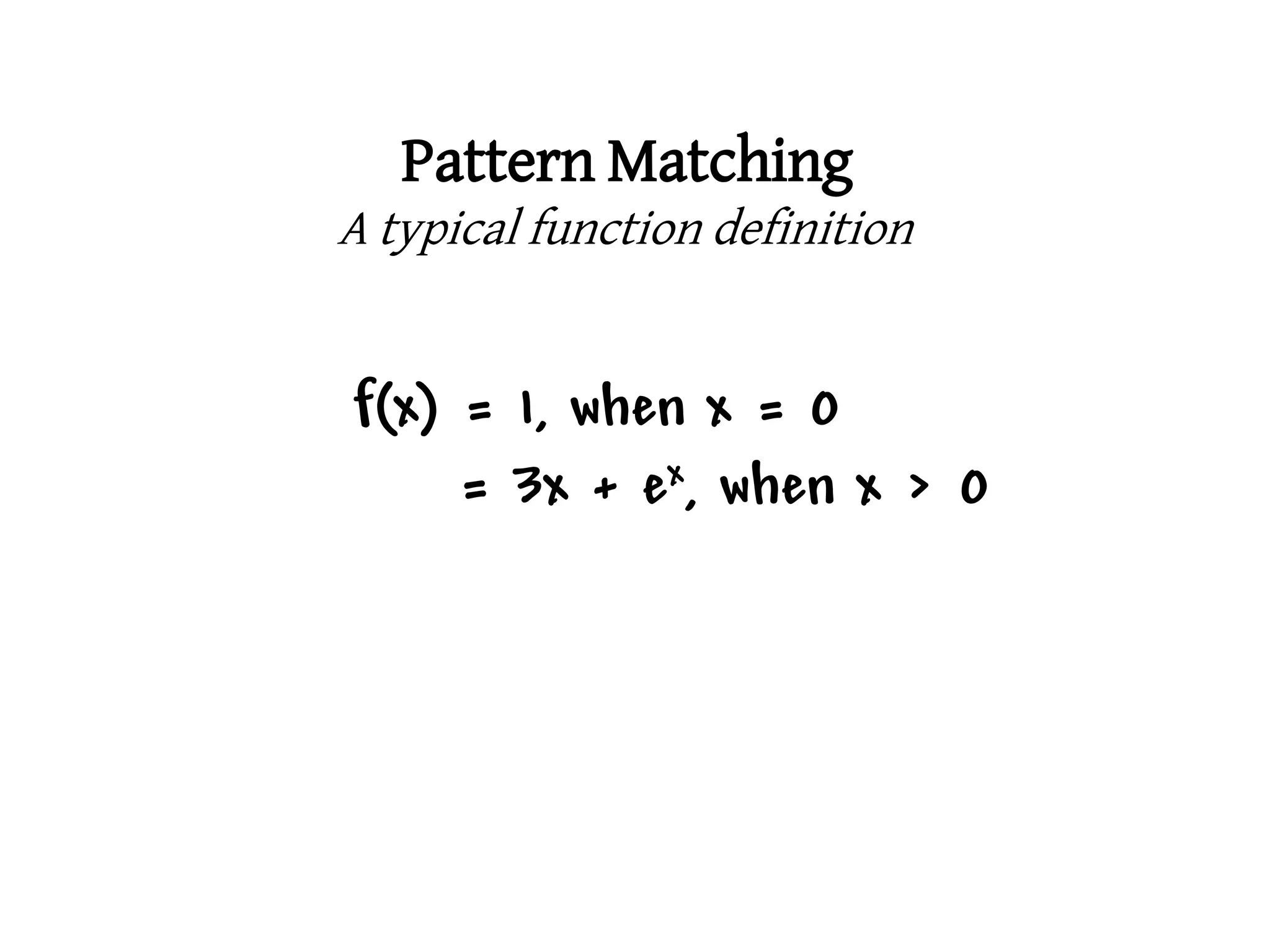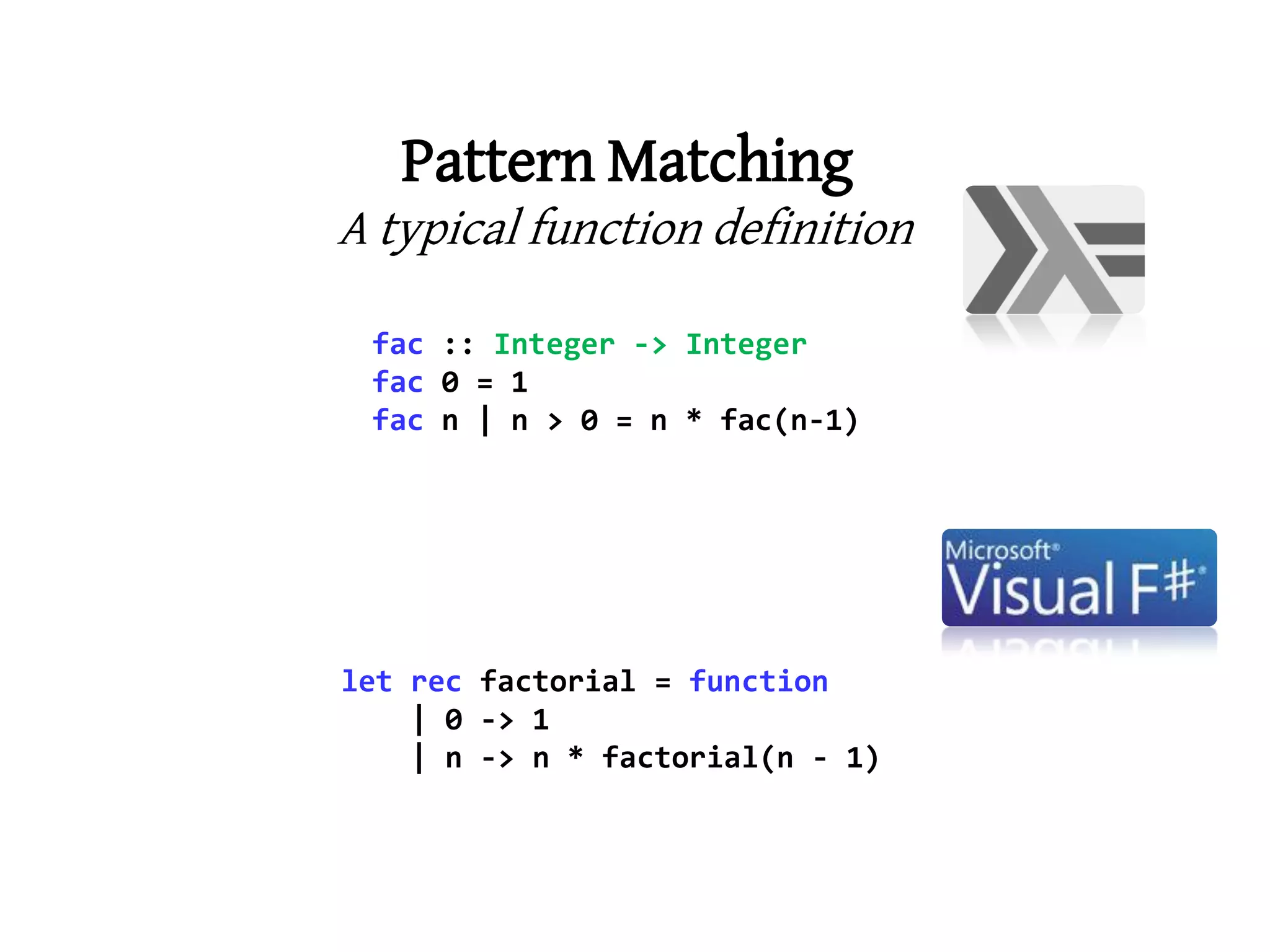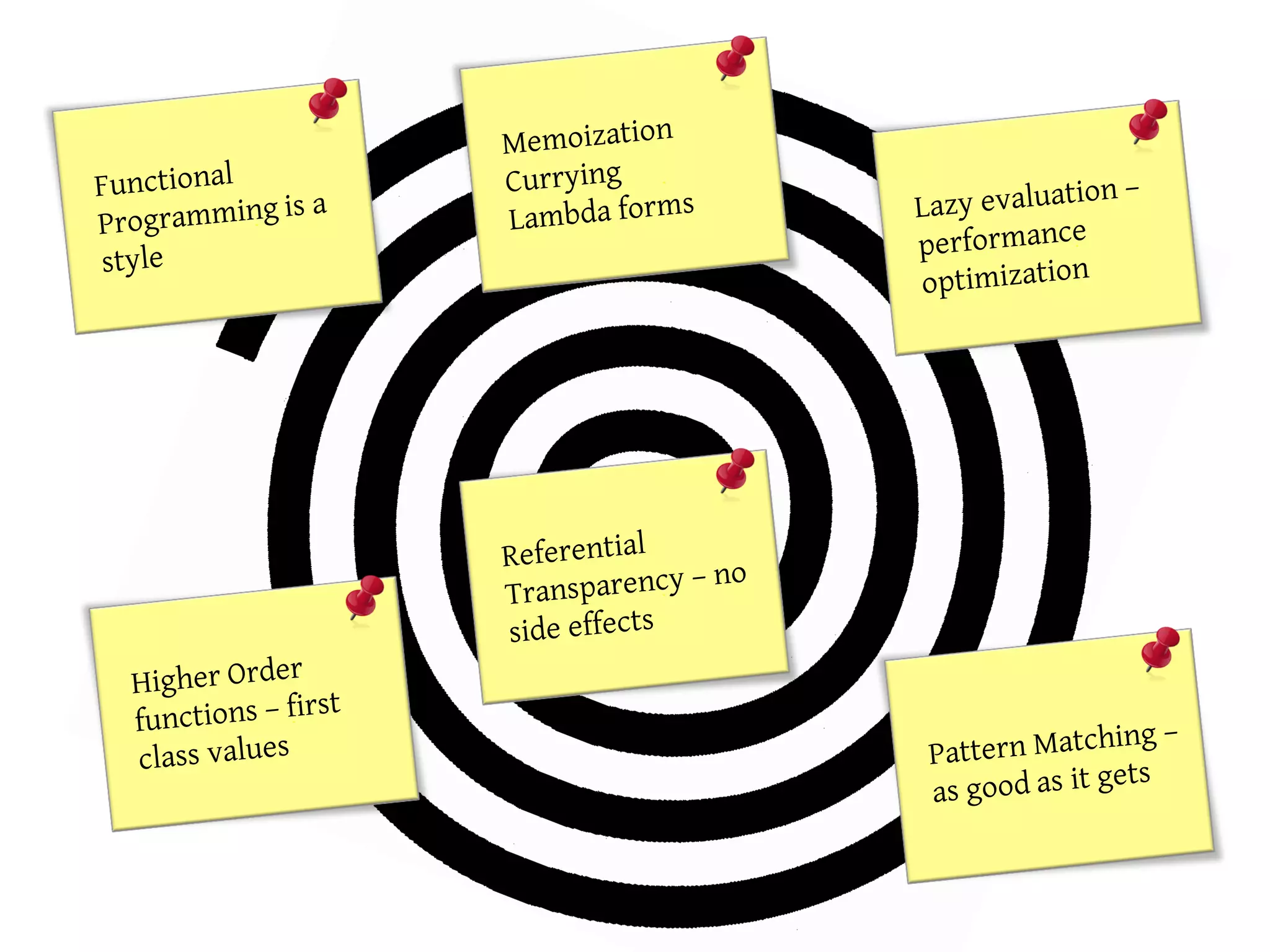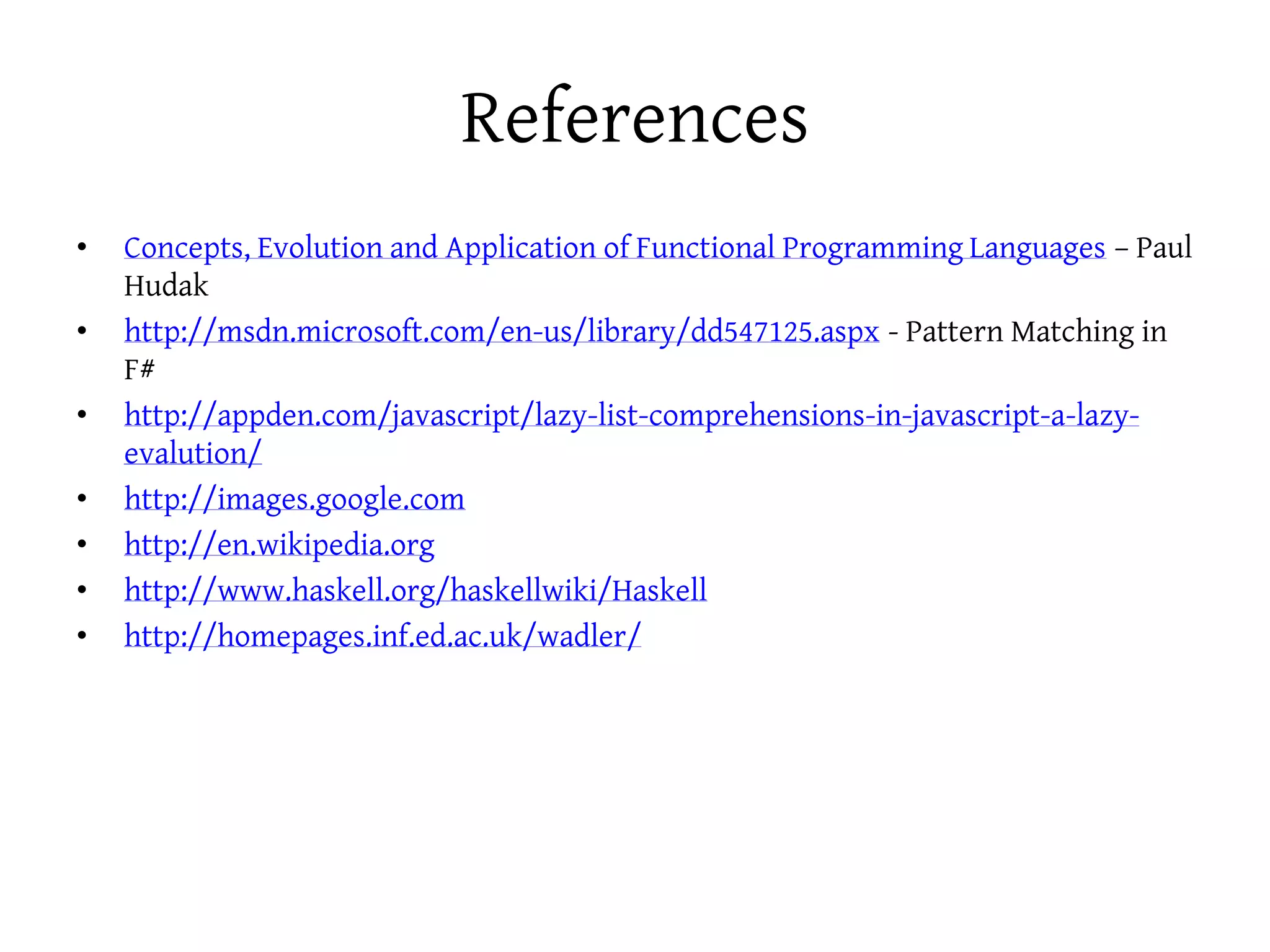Referential Transparency, Higher Order functions, Lazy Evaluation, and Pattern Matching are key concepts in Functional Programming. Referential Transparency means that equal expressions can be replaced with each other without changing the program's behavior. Higher Order functions allow functions to be passed as arguments to other functions and returned as results. Lazy Evaluation delays evaluating arguments until their values are needed to avoid unnecessary computation. Pattern Matching allows decomposing and analyzing data structures.
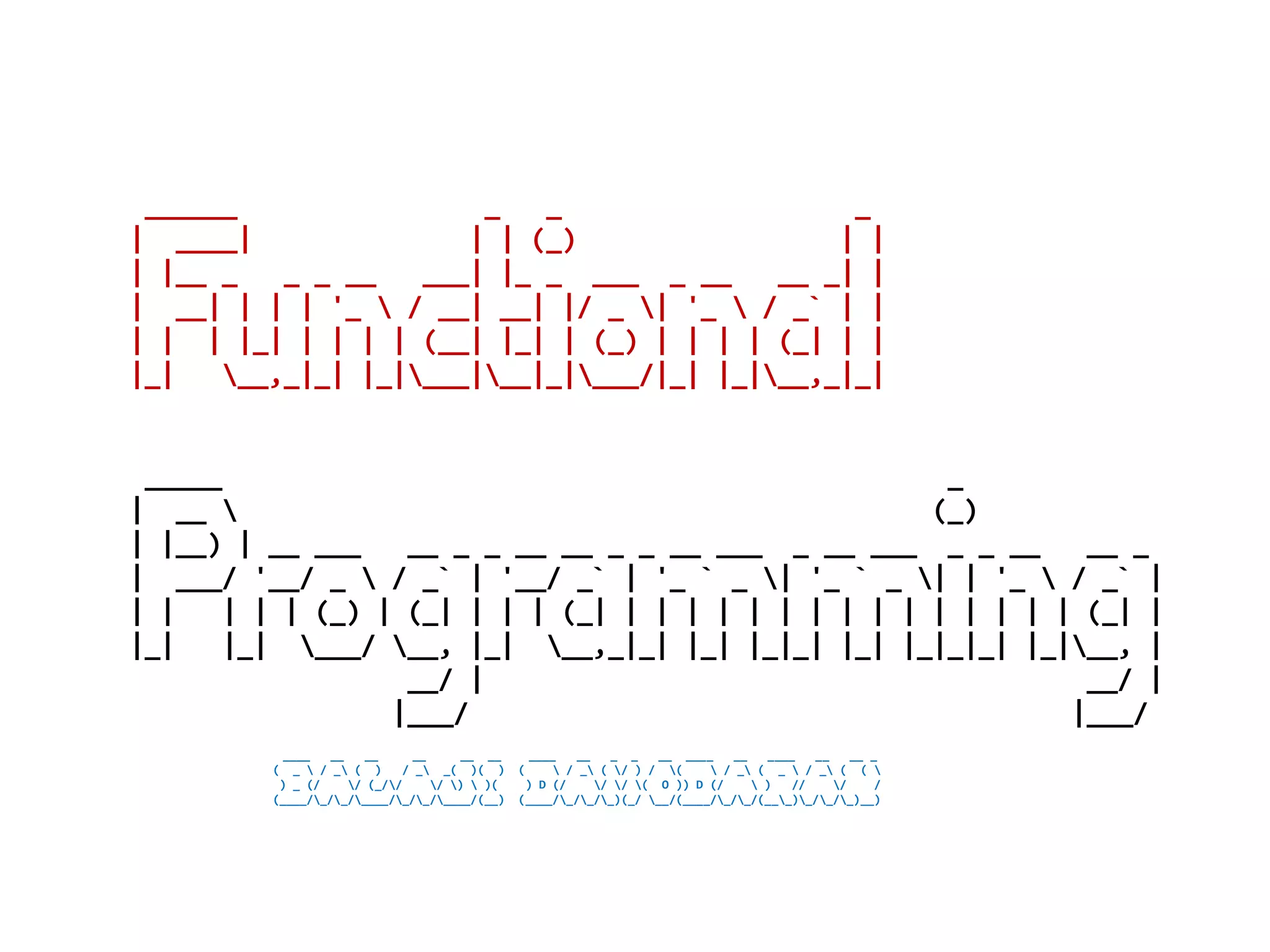
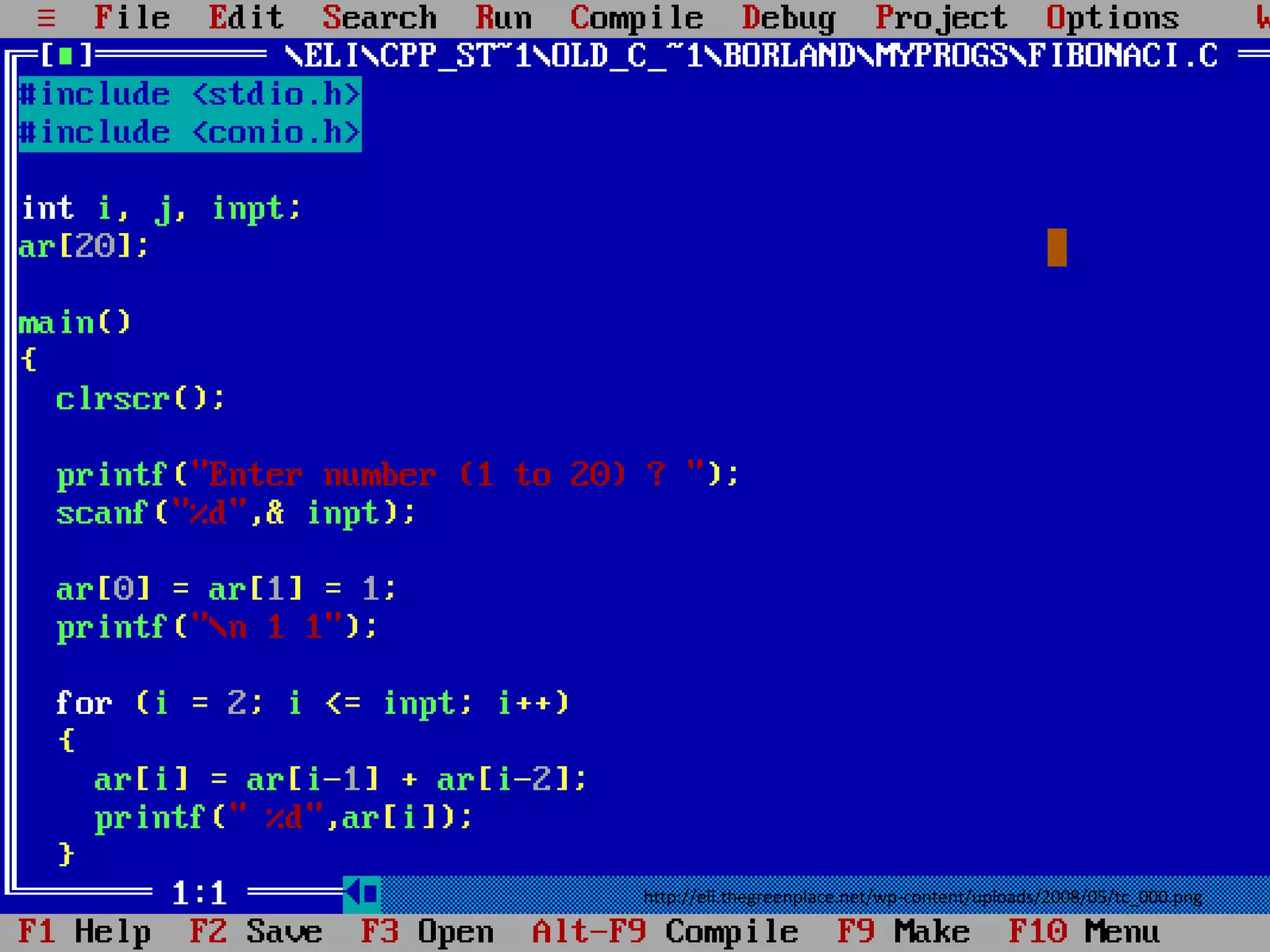
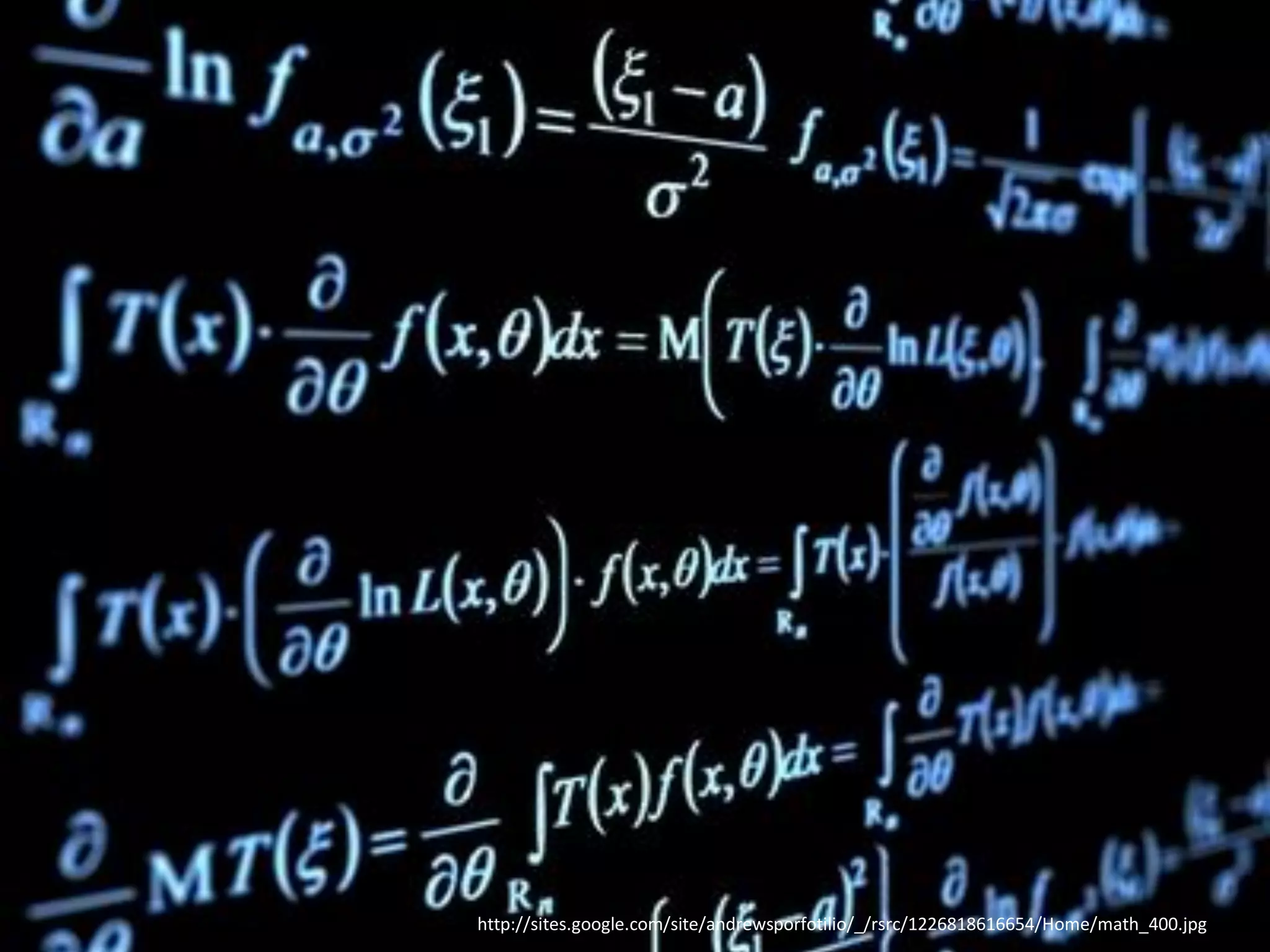
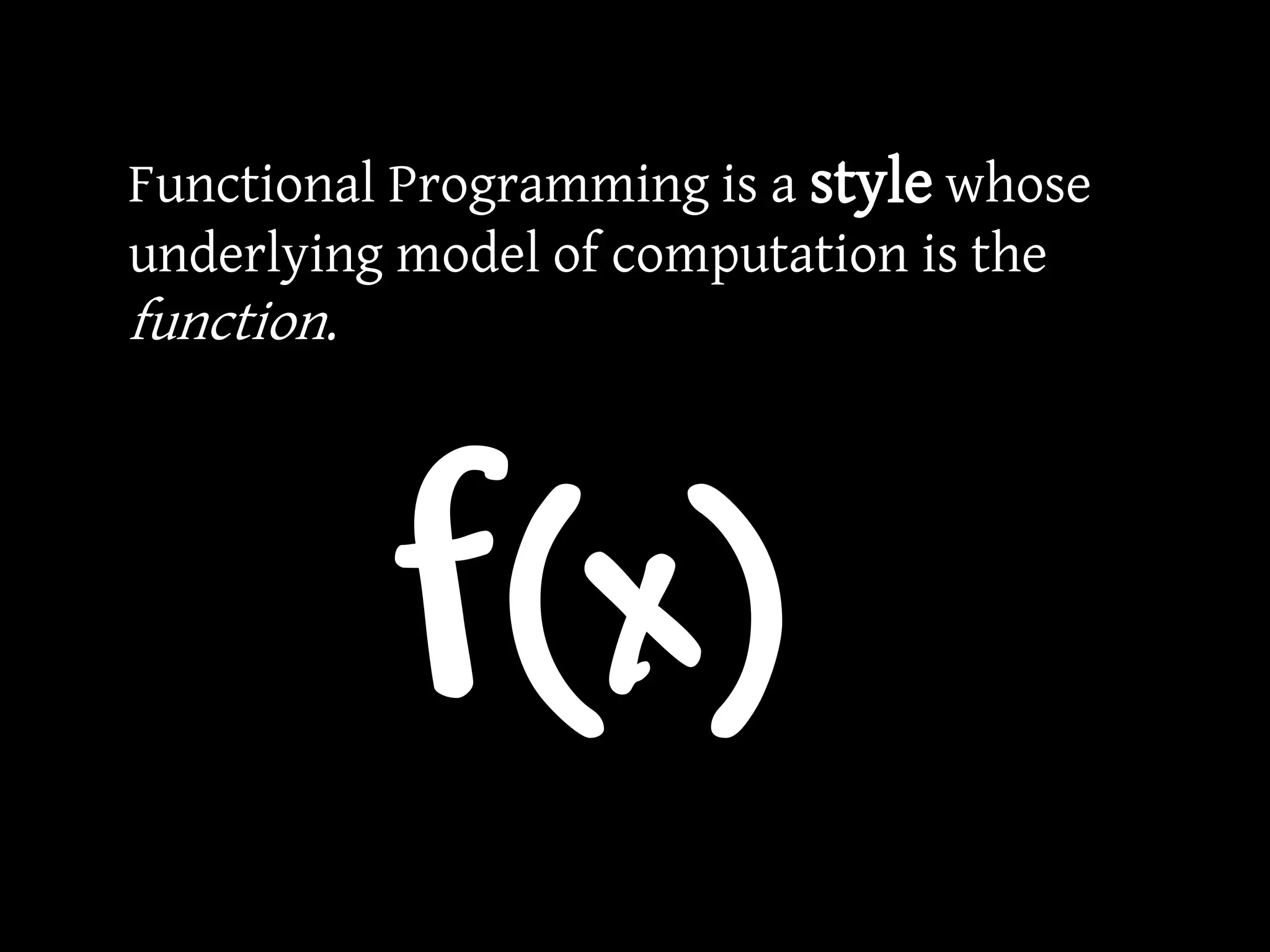
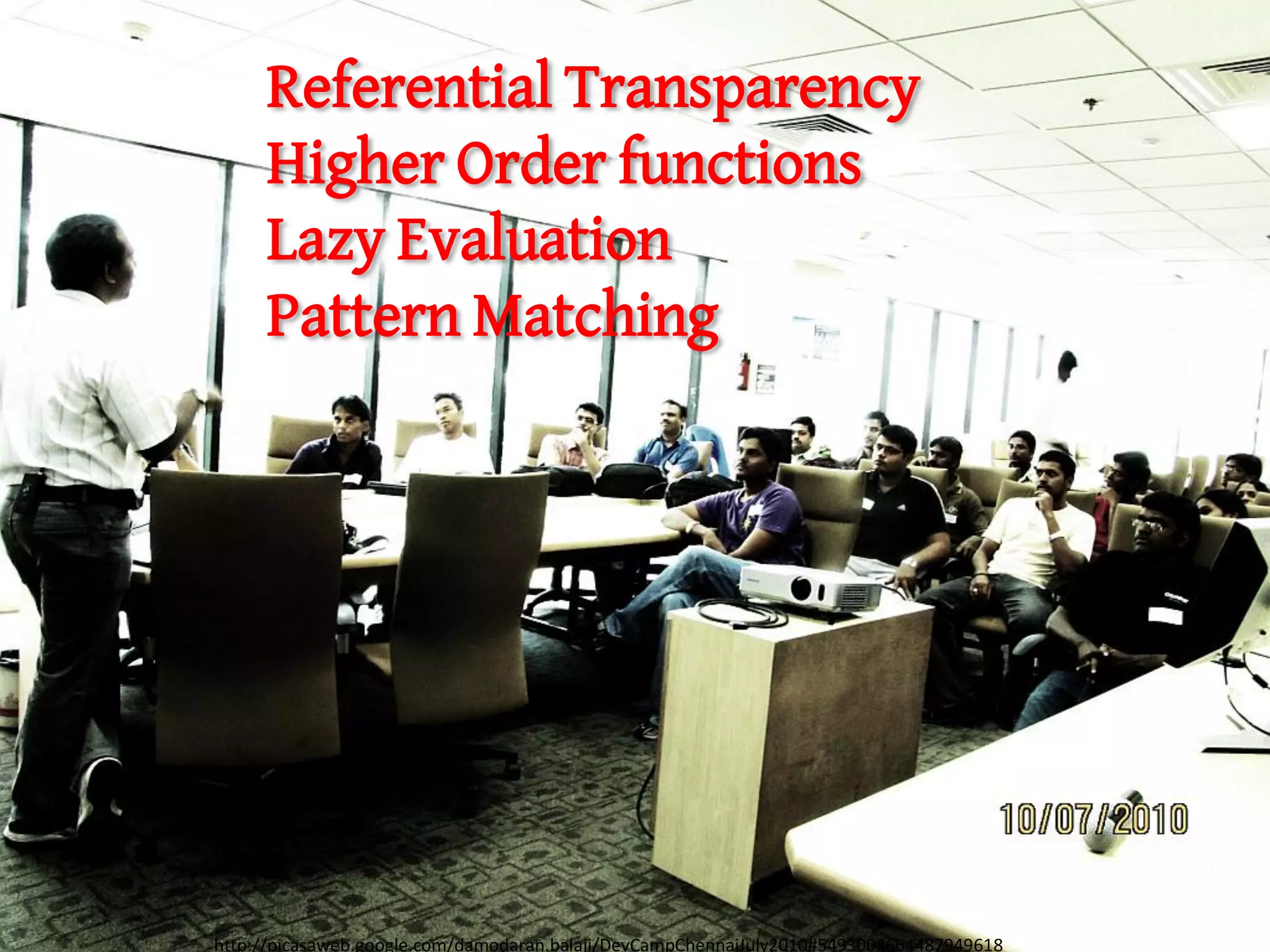
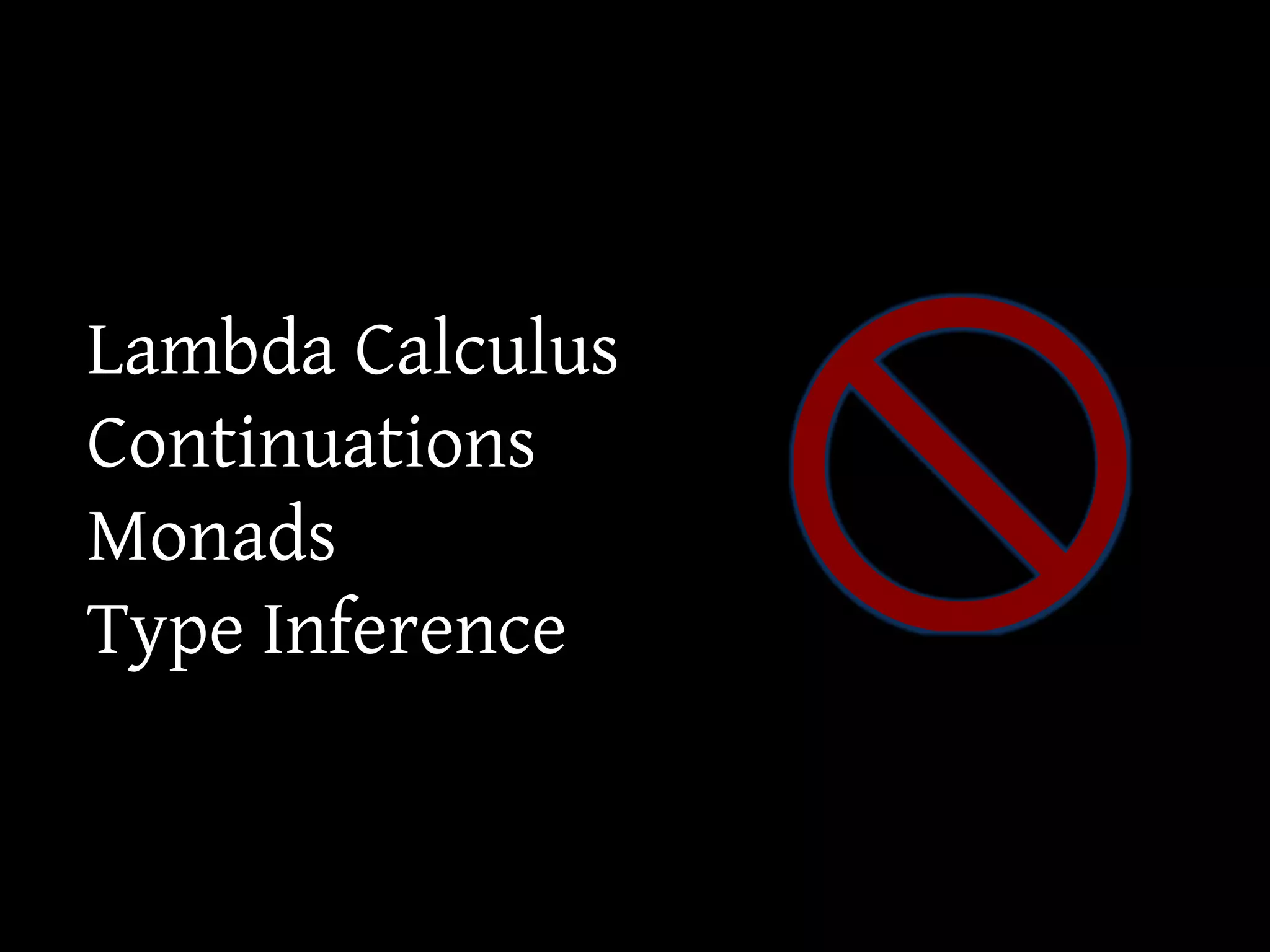
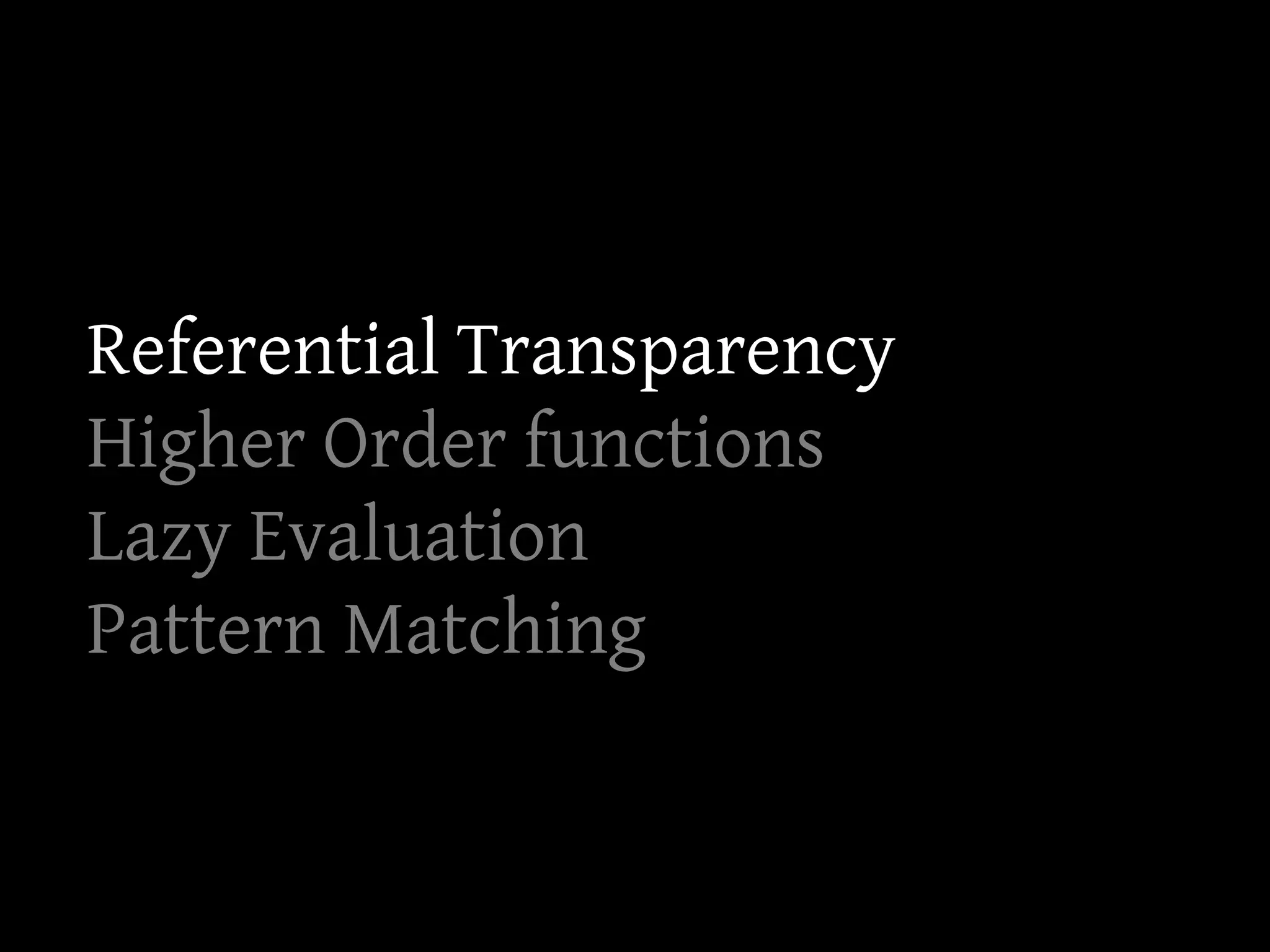
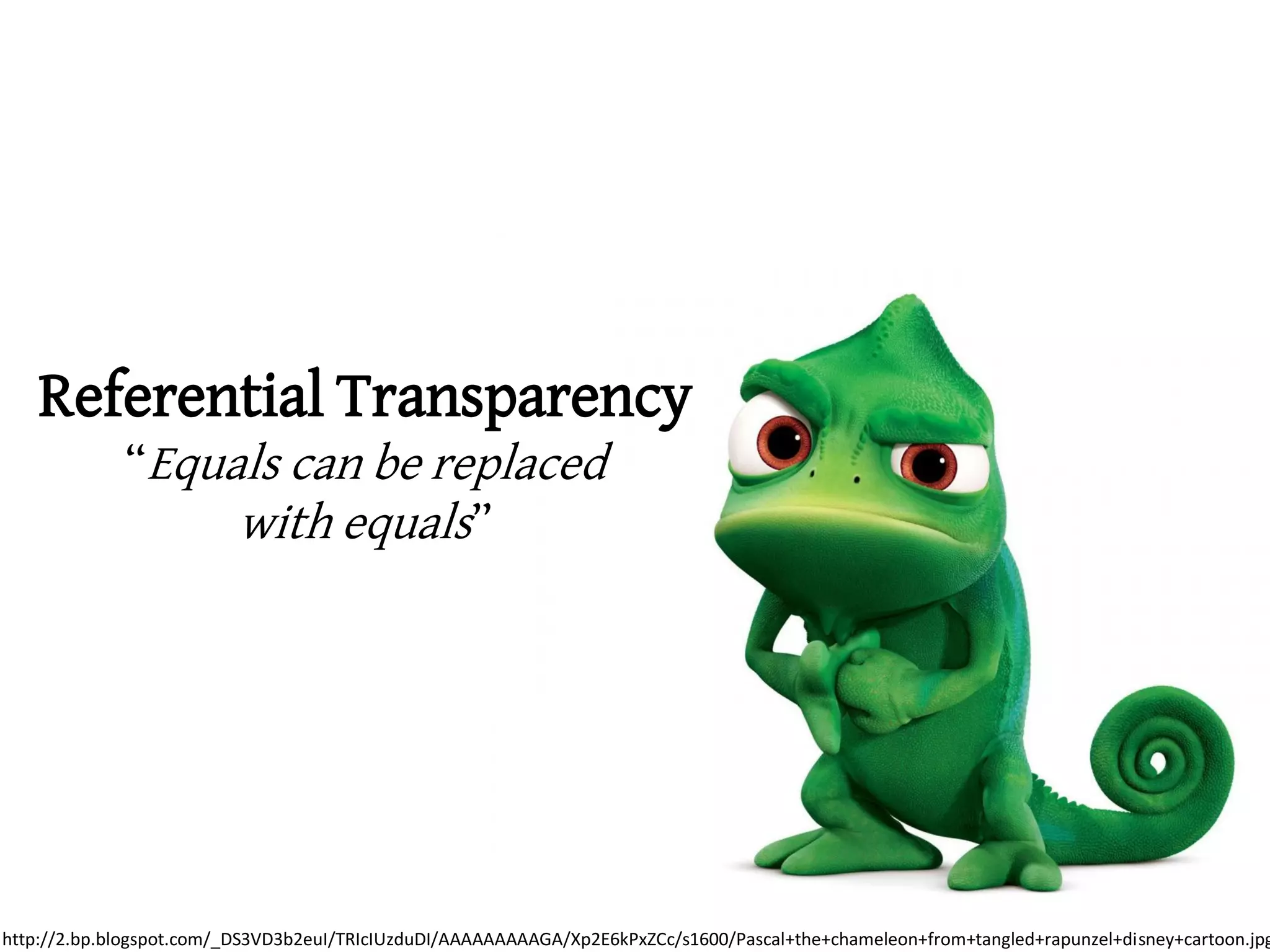
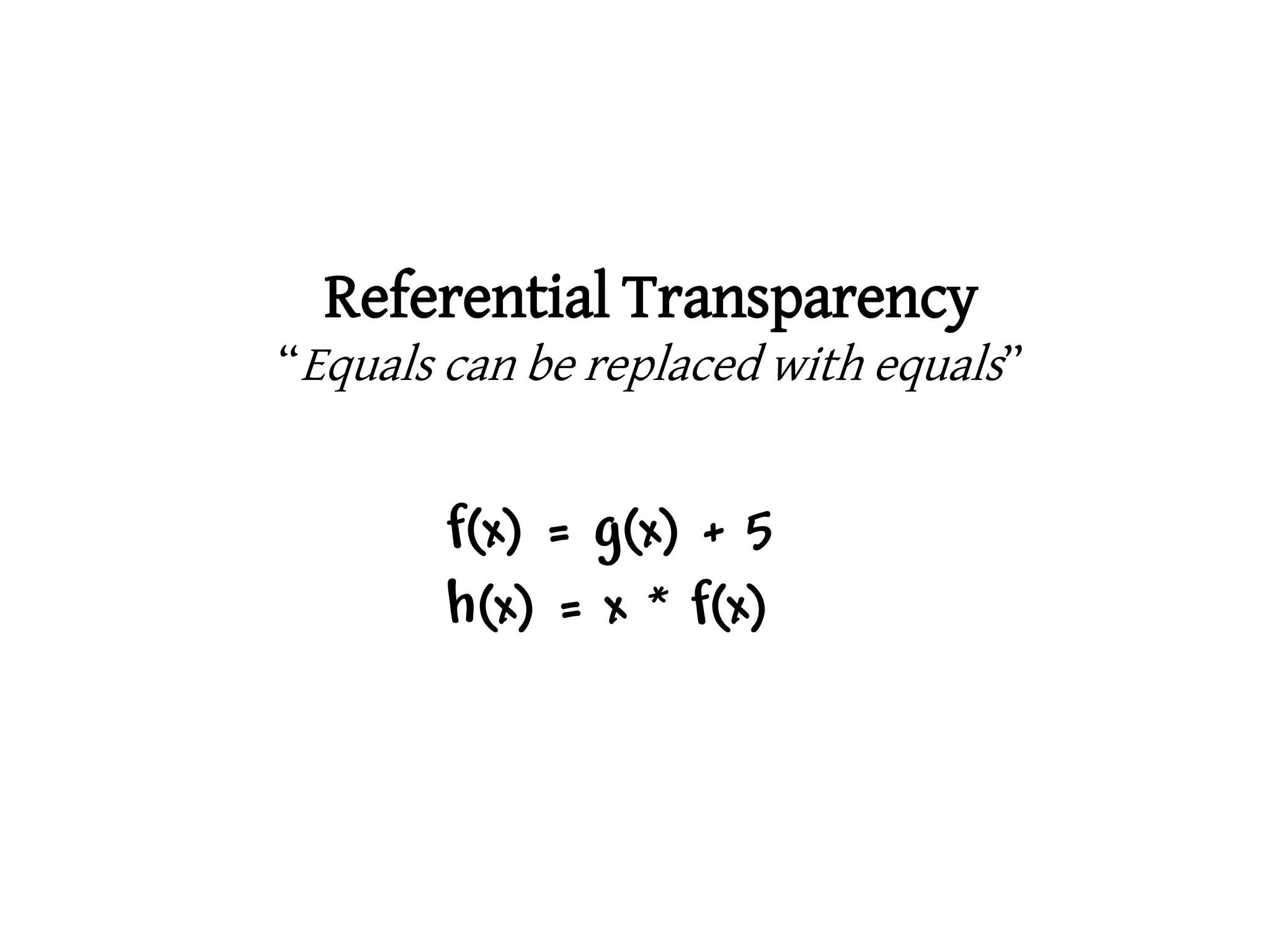
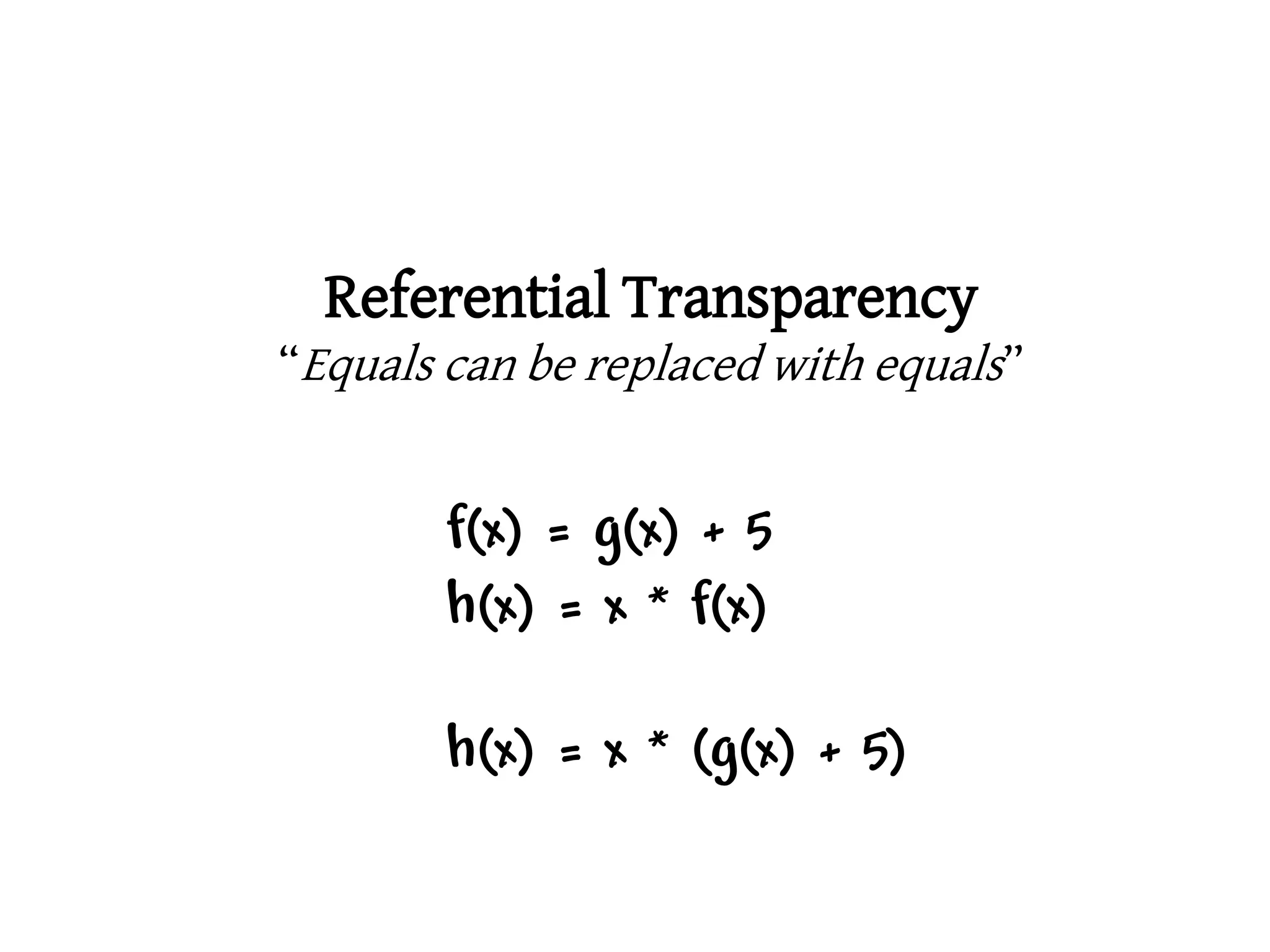
![public class ReferentiallyOpaque {
private int x = 0;
static int f(int y) {
return x += y;
}
public static void main(String[] args) {
ReferentiallyOpaque ro = new ReferentiallyOpaque();
System.out.println(ro.f(5));
System.out.println(ro.f(5));
}
}](https://image.slidesharecdn.com/functionalprogramming-110126002217-phpapp01/75/Functional-programming-basics-11-2048.jpg)
![public class ReferentiallyOpaque {
private int x = 0;;
static int f(int y) {
return x += y;
}
public static void main(String[] args) {
ReferentiallyOpaque ro = new ReferentiallyOpaque();
System.out.println(ro.f(5));
System.out.println(ro.f(5));
}
}
5
10](https://image.slidesharecdn.com/functionalprogramming-110126002217-phpapp01/75/Functional-programming-basics-12-2048.jpg)
![public class Example {
public static void main(String[] args) {
StringBuffer buffer = new StringBuffer("Hello World");
System.out.println(buffer.reverse());
System.out.println(buffer.reverse());
}
}](https://image.slidesharecdn.com/functionalprogramming-110126002217-phpapp01/75/Functional-programming-basics-13-2048.jpg)
![public class Example {
public static void main(String[] args) {
StringBuffer buffer = new StringBuffer("Hello World");
System.out.println(buffer.reverse());
System.out.println(buffer.reverse());
}
}
dlroW olleH
Hello World](https://image.slidesharecdn.com/functionalprogramming-110126002217-phpapp01/75/Functional-programming-basics-14-2048.jpg)
![public class Example {
public static void main(String[] args) {
StringBuffer buffer = new StringBuffer("Hello World");
StringBuffer s1 = buffer.reverse();
StringBuffer s2 = buffer.reverse();
System.out.println(s1 + " " + s2);
}
}](https://image.slidesharecdn.com/functionalprogramming-110126002217-phpapp01/75/Functional-programming-basics-15-2048.jpg)
![public class Example {
public static void main(String[] args) {
StringBuffer buffer = new StringBuffer("Hello World");
StringBuffer s1 = buffer.reverse();
StringBuffer s2 = buffer.reverse();
System.out.println(s1 + " " + s2);
}
}
Hello World Hello World](https://image.slidesharecdn.com/functionalprogramming-110126002217-phpapp01/75/Functional-programming-basics-16-2048.jpg)
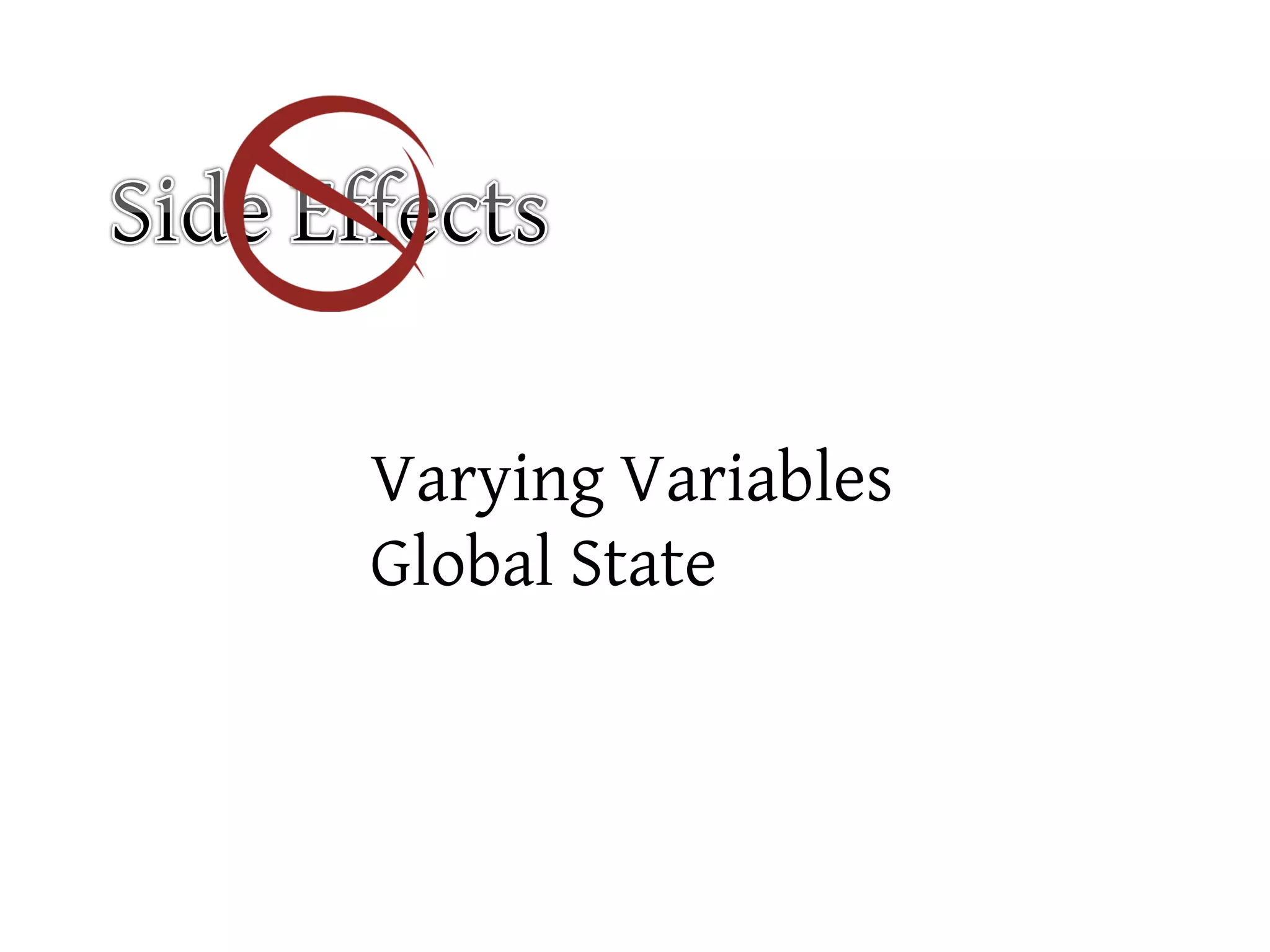
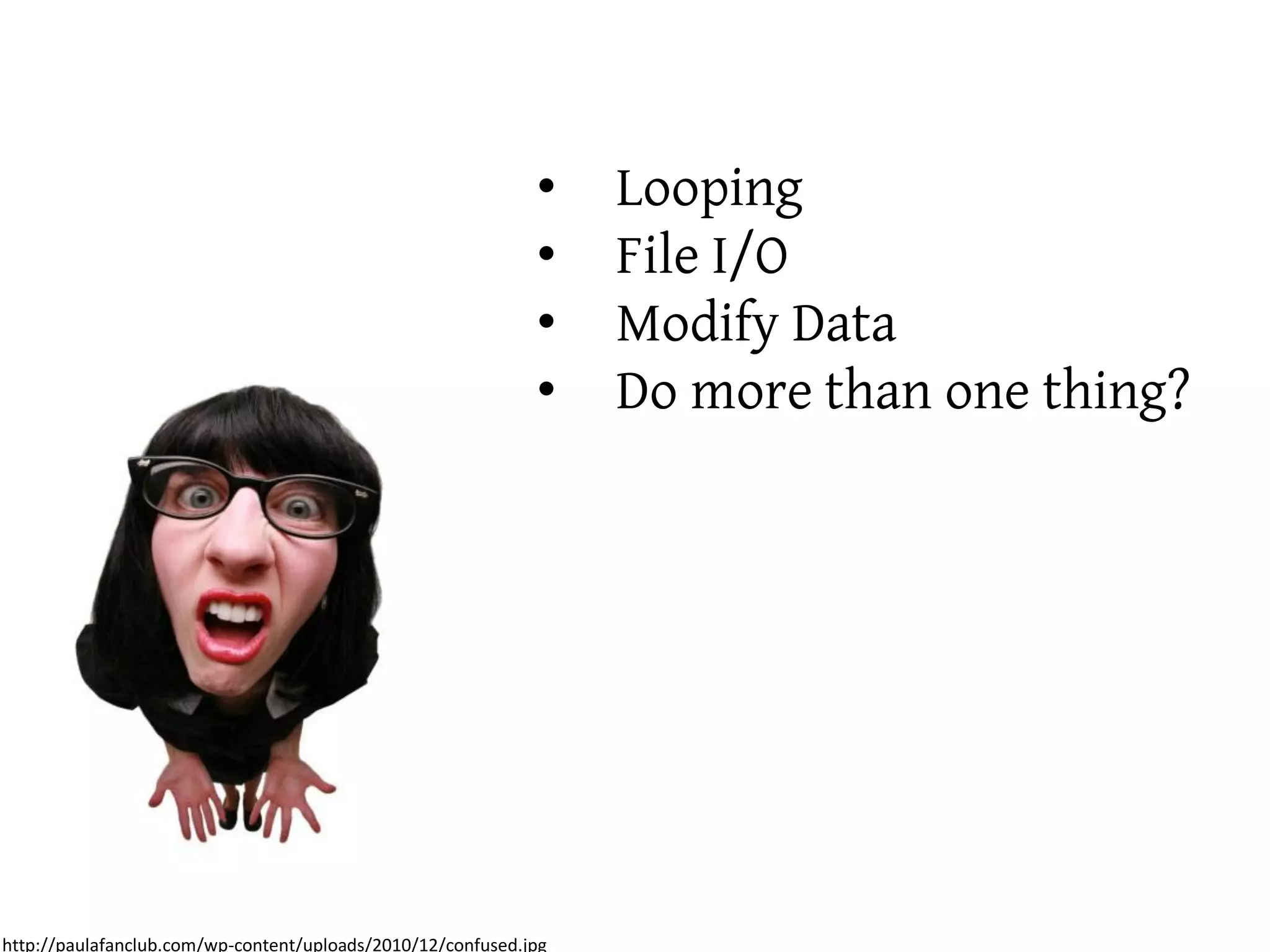
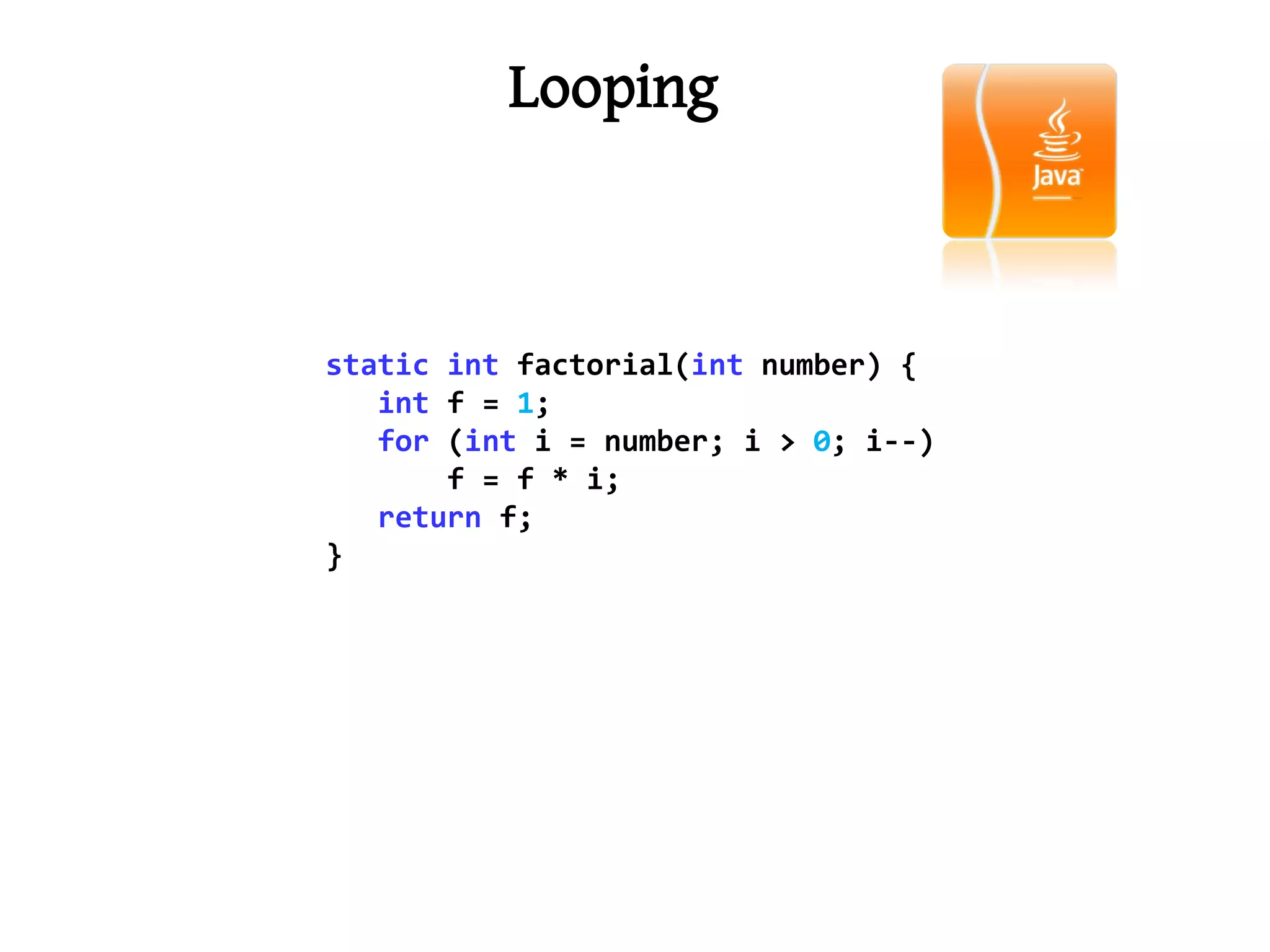
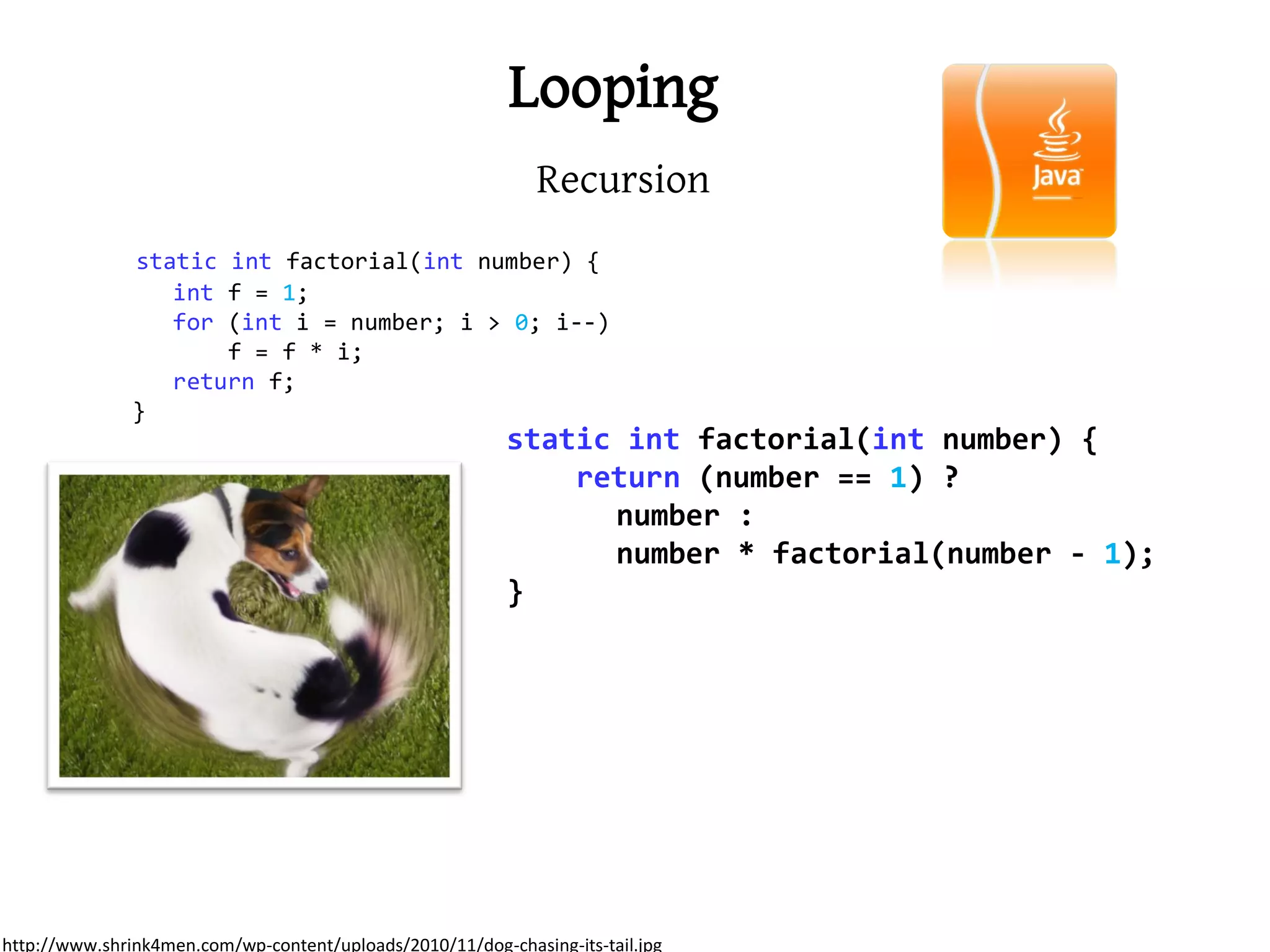
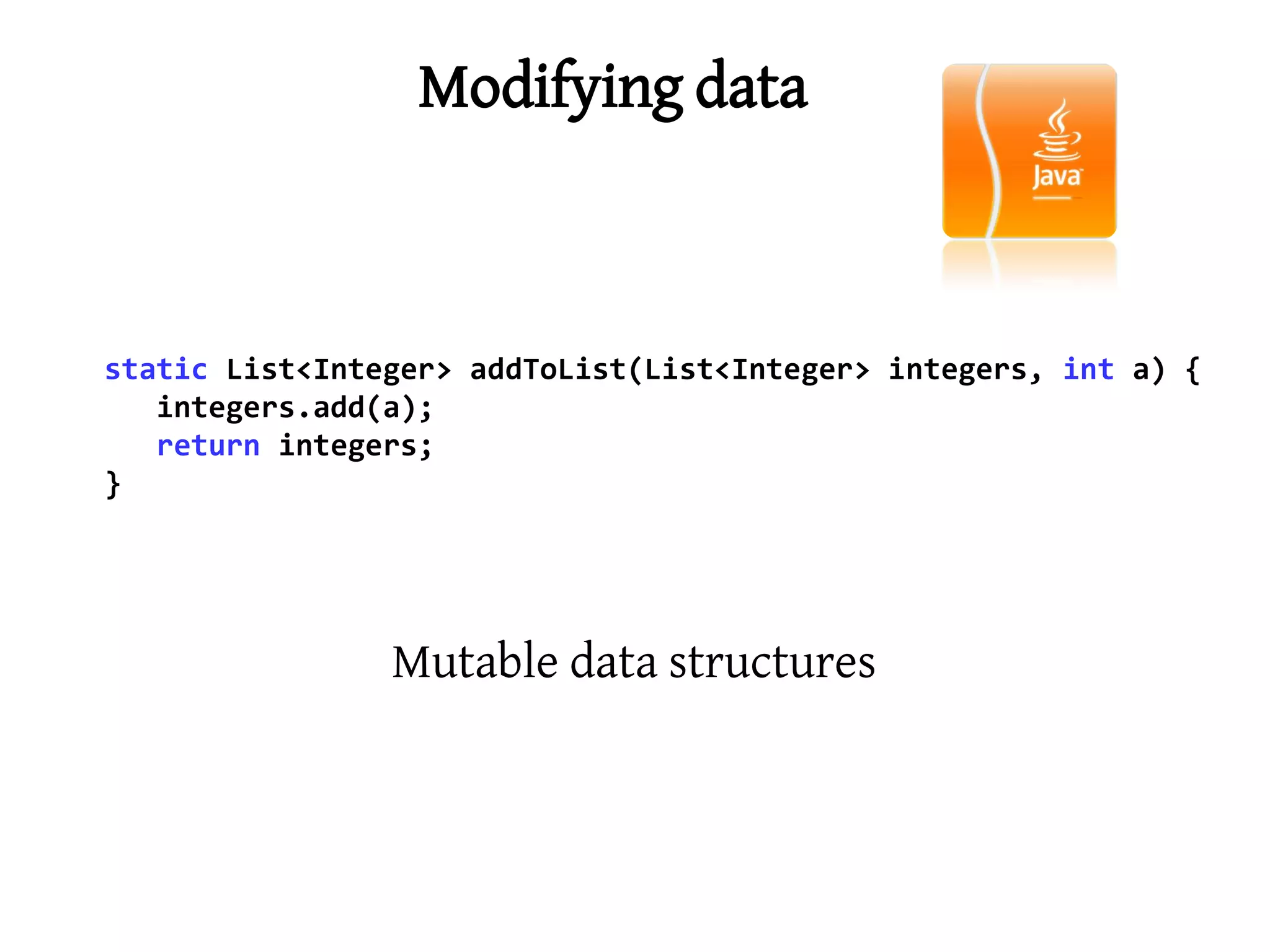
![Modifying data
Immutable
static List<Integer> addToList(List<Integer> integers, int a) {
integers.add(a);
return integers;
}
let addToList list a =
list @ [a]
> let g = [1;2;3;];;
val g : int list = [1; 2; 3]
> addToList g 4;;
val it : int list = [1; 2; 3; 4]
> g;;
val it : int list = [1; 2; 3]
>
http://4.bp.blogspot.com/_RpRScqAI8e4/SbNPgumsqPI/AAAAAAAAAK4/ZK8ZsfKJCmQ/s400/wolverine+hugh+jackman.jpg](https://image.slidesharecdn.com/functionalprogramming-110126002217-phpapp01/75/Functional-programming-basics-22-2048.jpg)
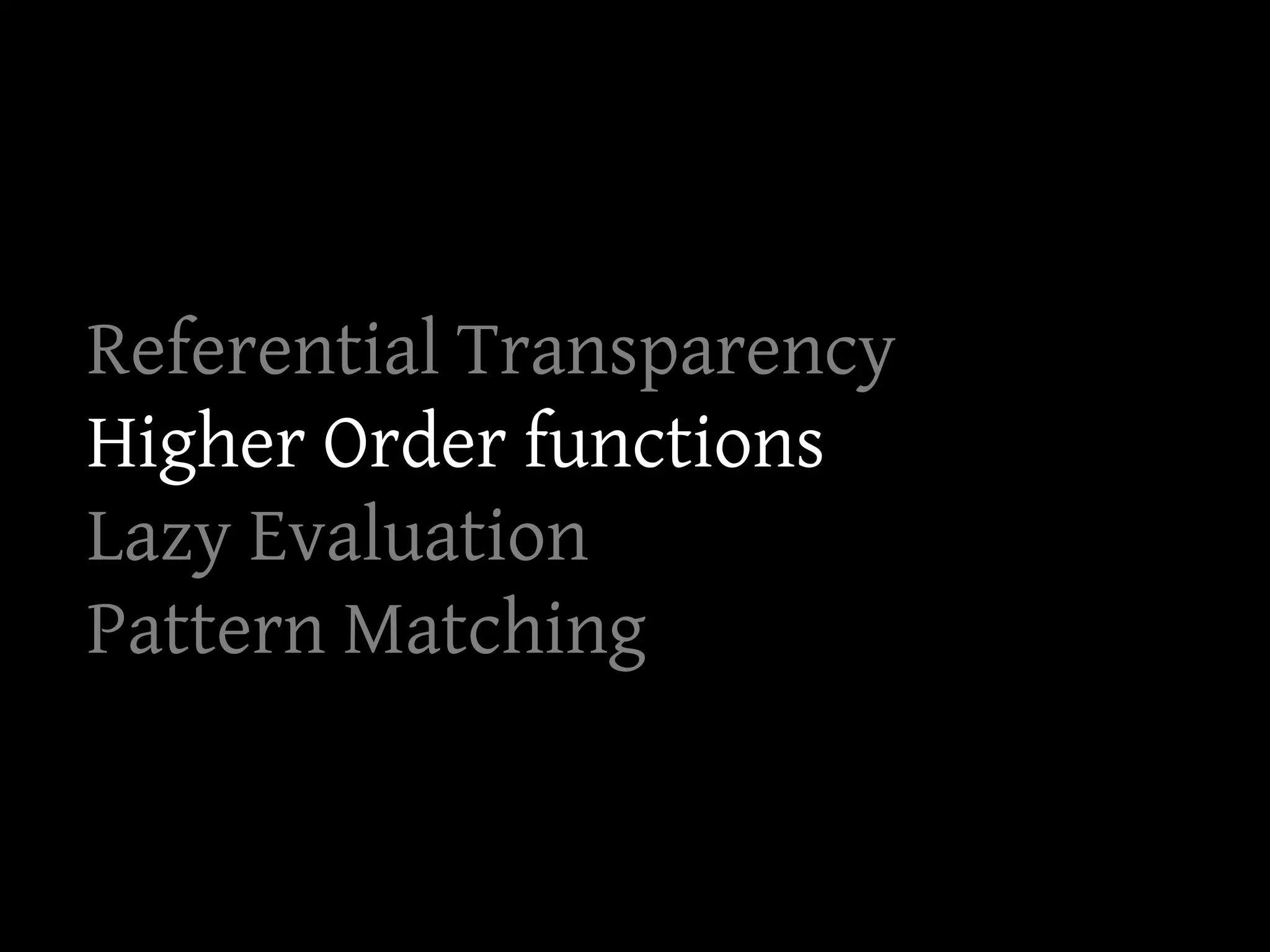
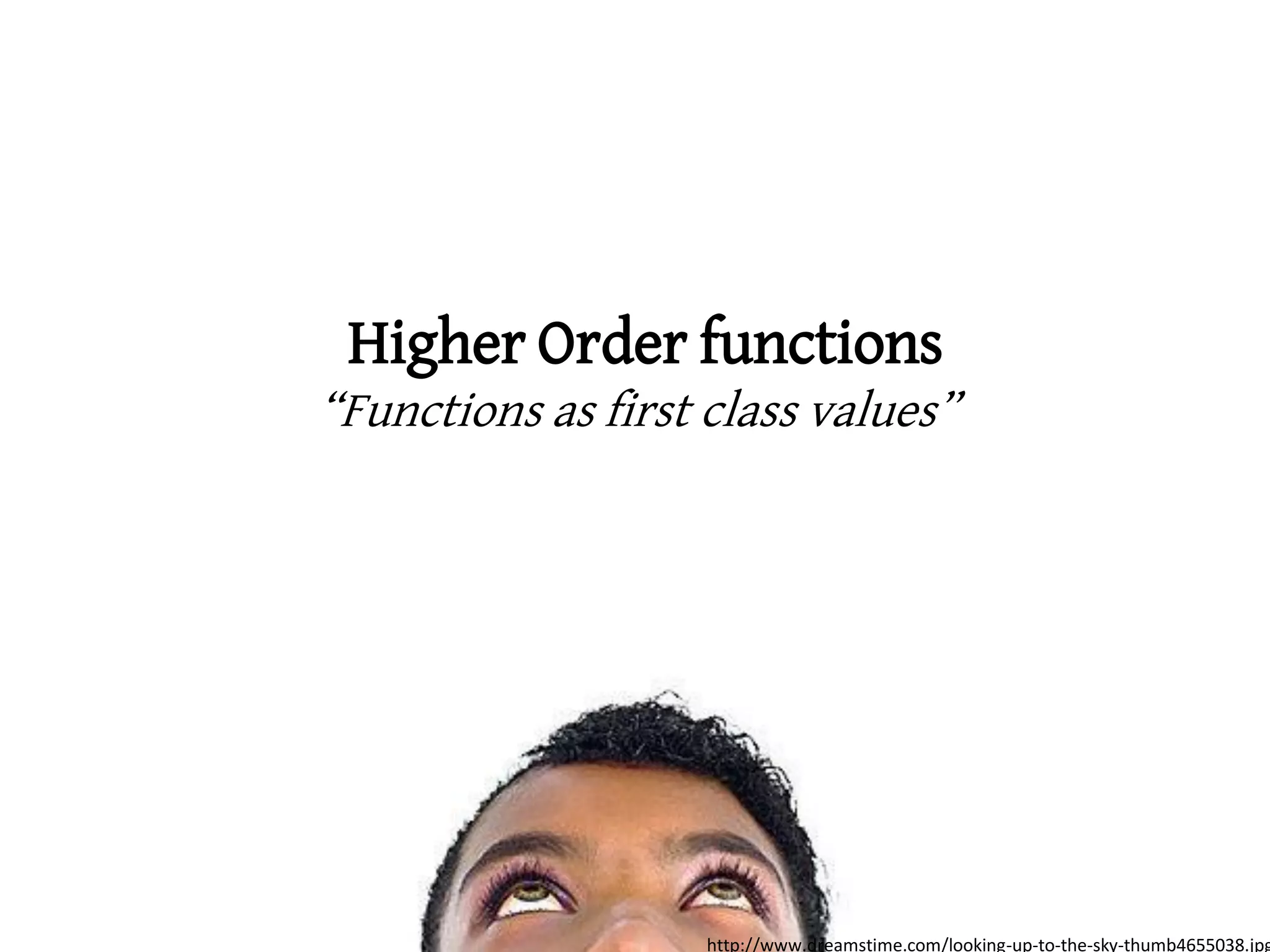
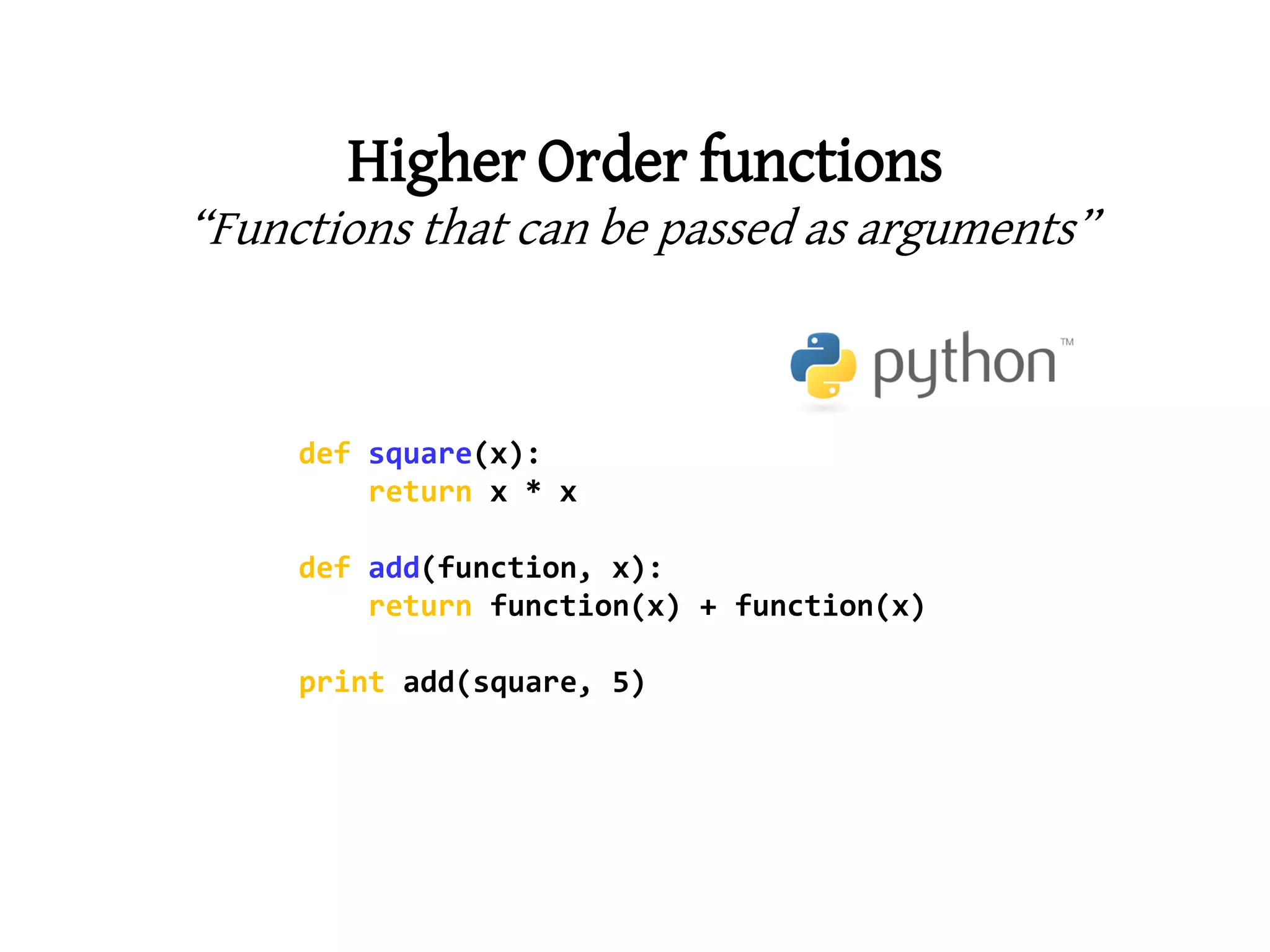
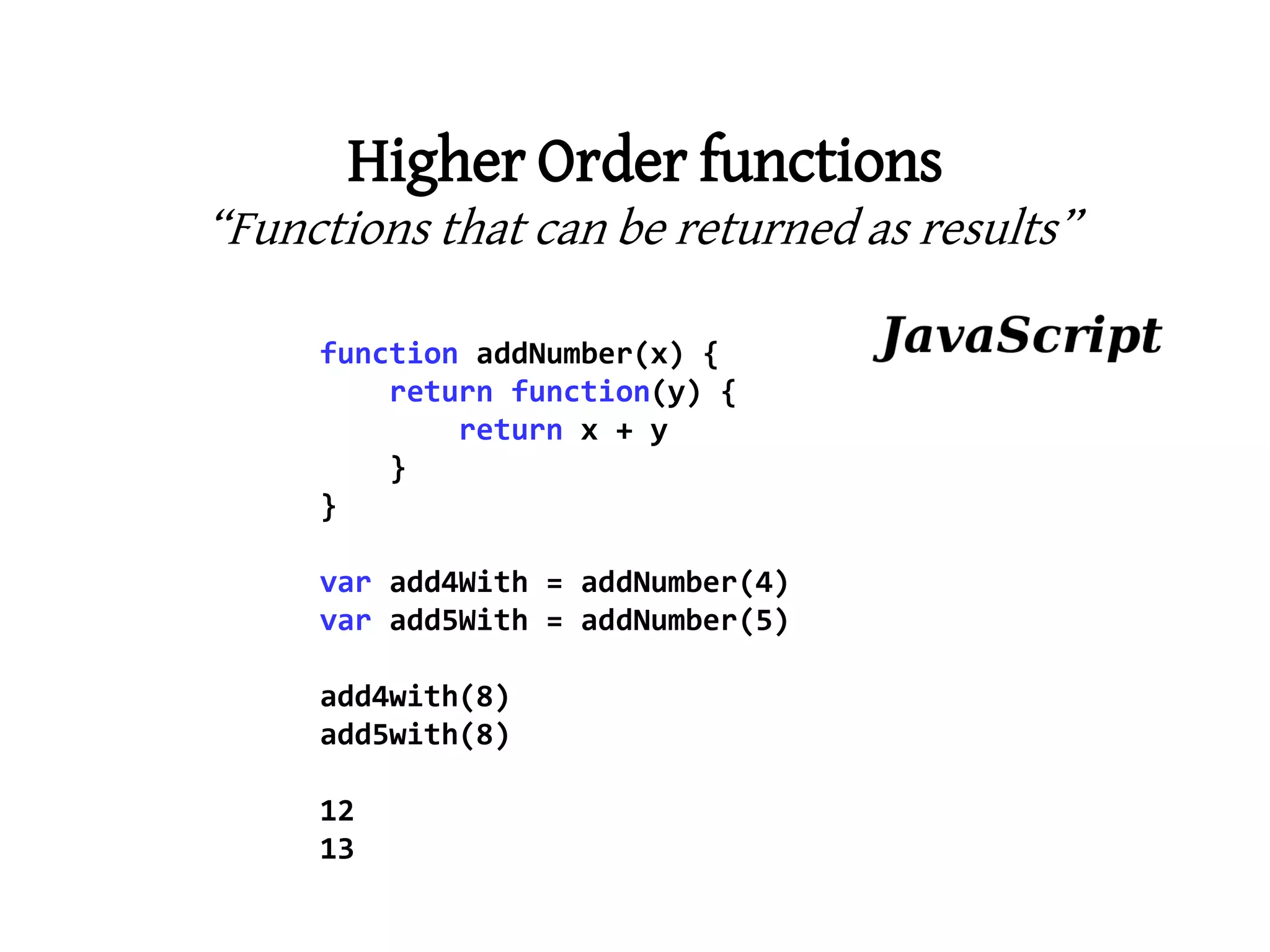
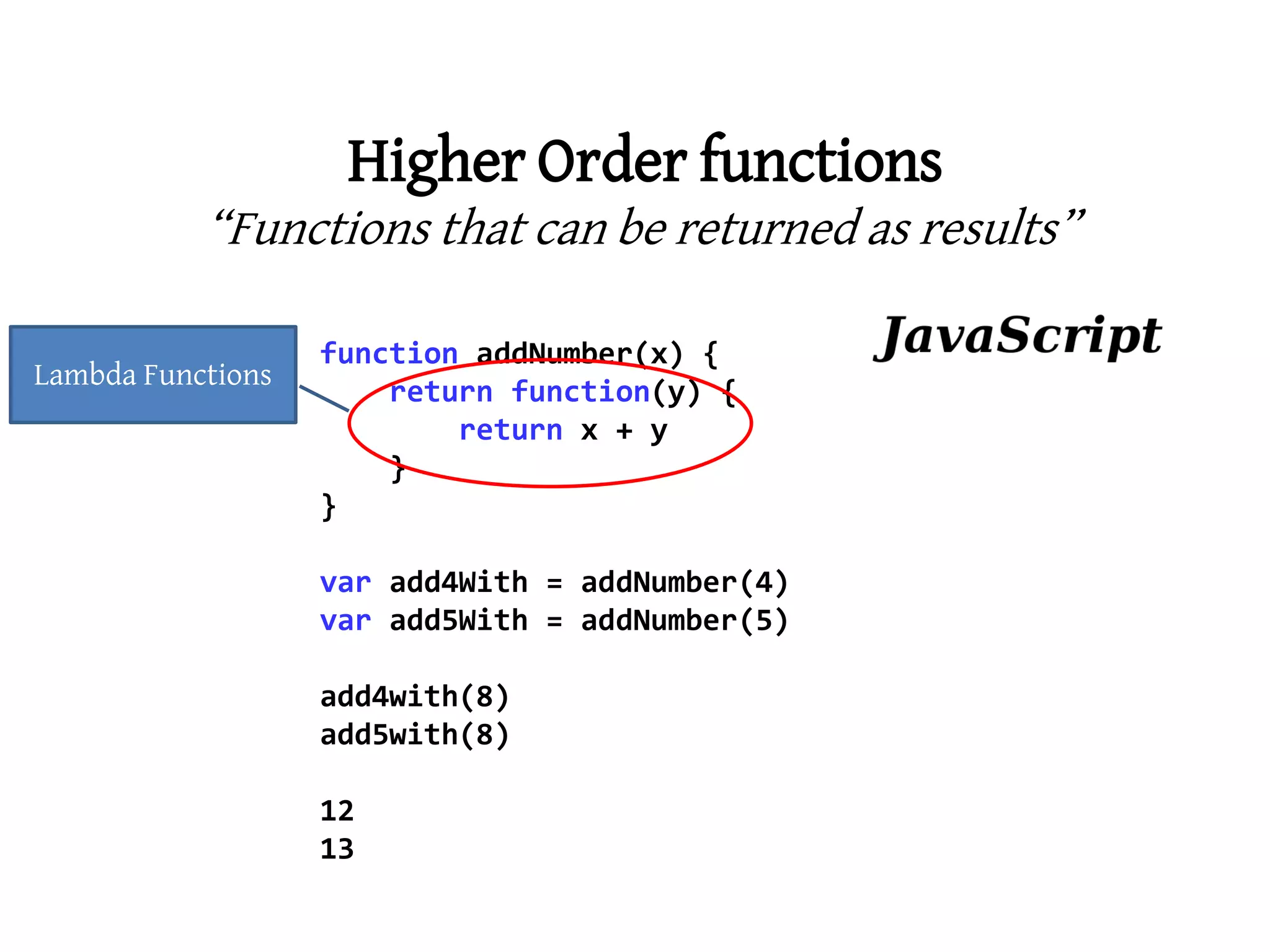
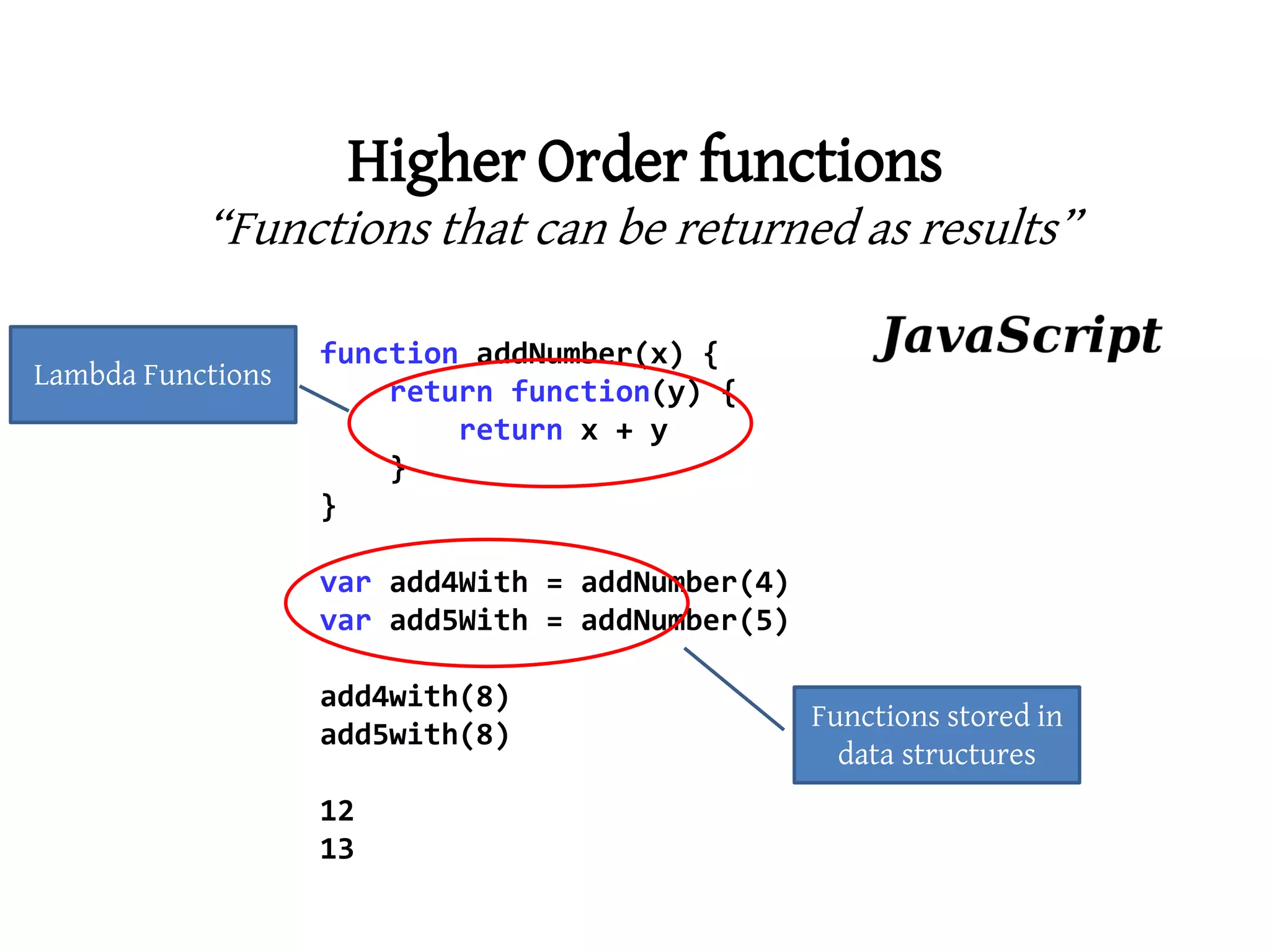
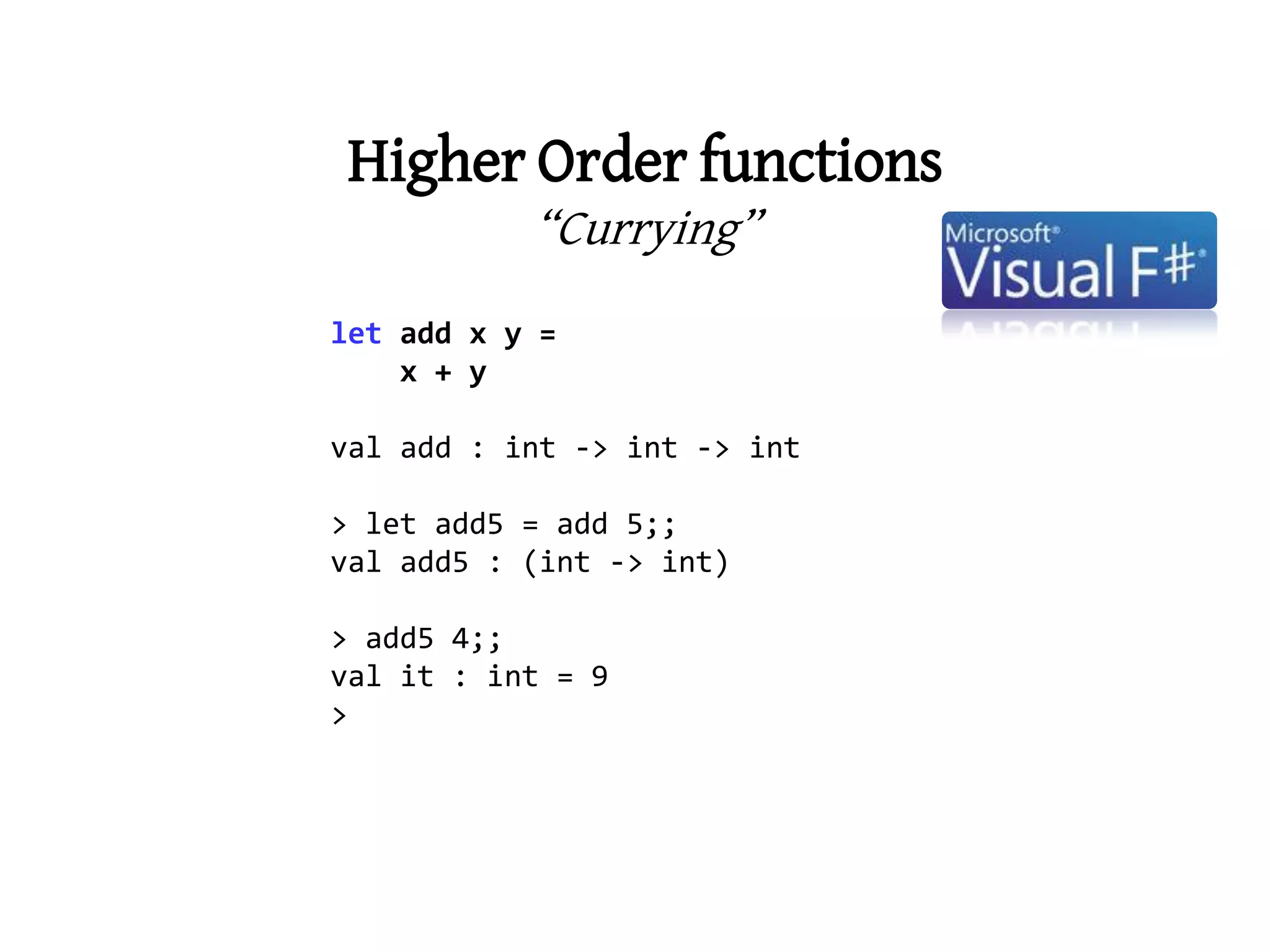
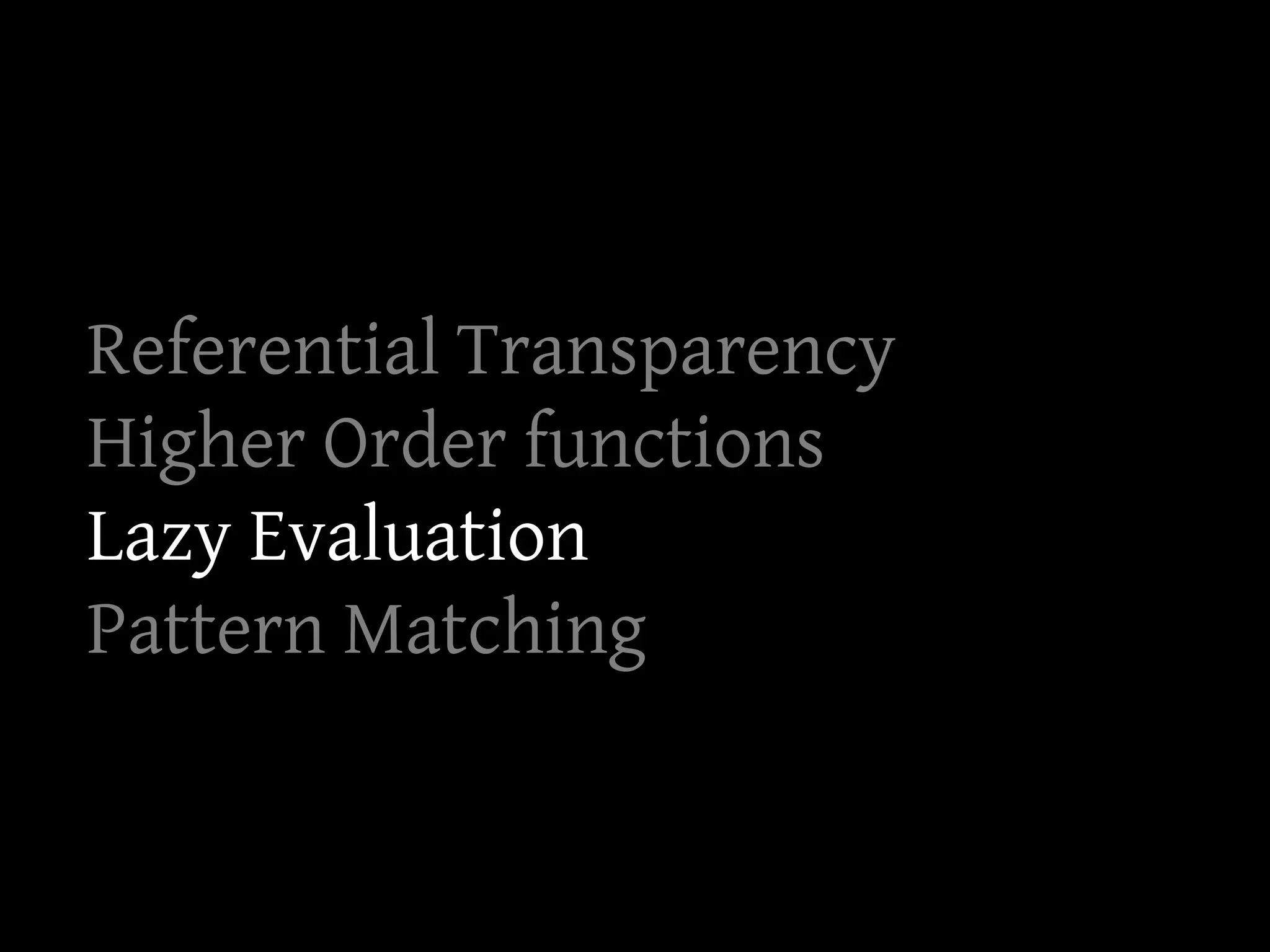
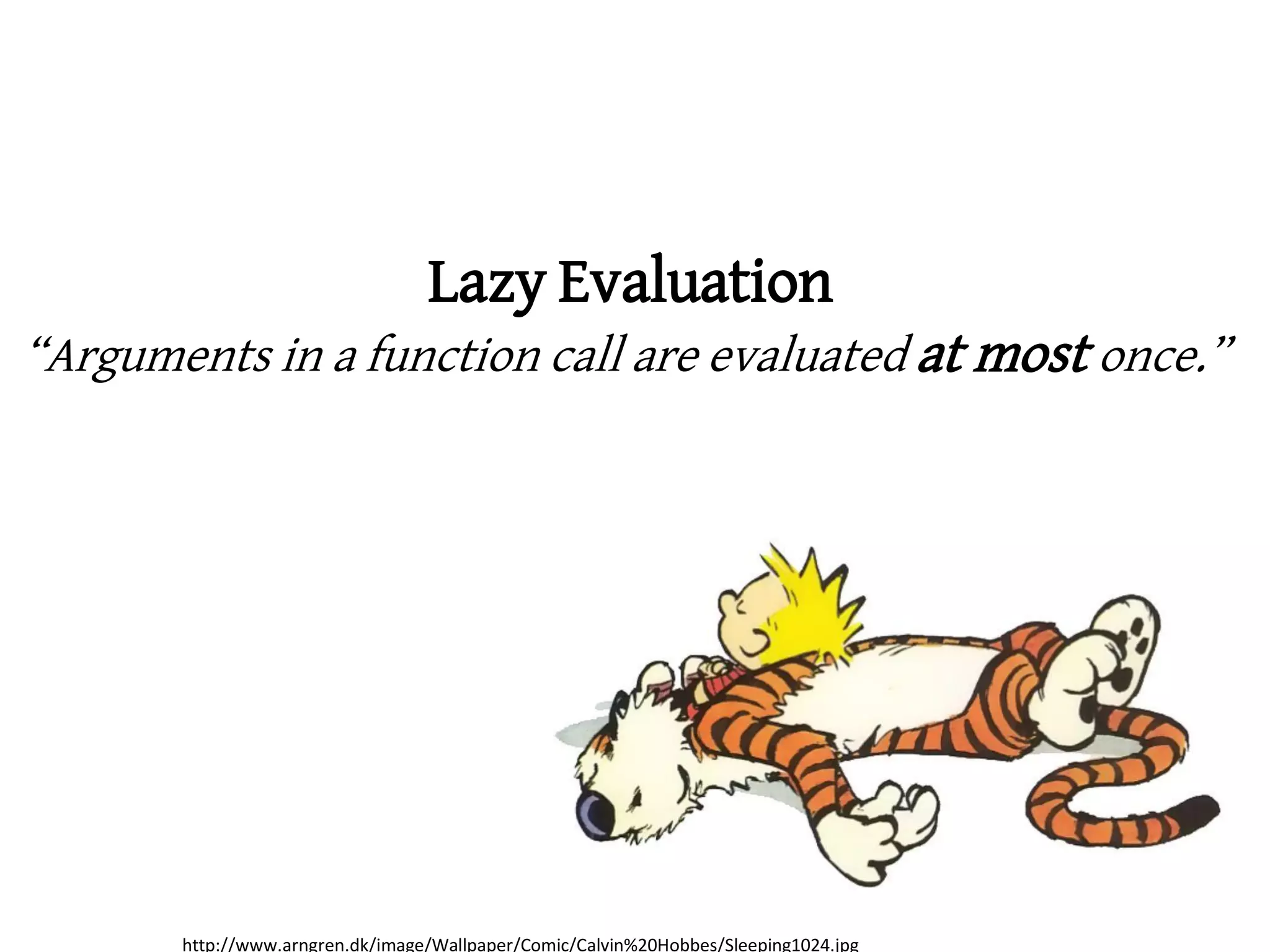
![Lazy Evaluation
“Ability to invoke expressions only when its value is needed.”
static void Main(string[] args)
{
var lazy = new Lazy<int>(() =>
{
Console.WriteLine("calculating...");
return 6 * 7;
});
Console.WriteLine(lazy.Value);
Console.WriteLine(lazy.Value);
}](https://image.slidesharecdn.com/functionalprogramming-110126002217-phpapp01/75/Functional-programming-basics-32-2048.jpg)
![Lazy Evaluation
“Ability to invoke expressions only when its value is needed.”
static void Main(string[] args)
{
var lazy = new Lazy<int>(() =>
{
Console.WriteLine("calculating...");
return 6 * 7;
});
Console.WriteLine(lazy.Value);
Console.WriteLine(lazy.Value);
}
calculating...
42
42](https://image.slidesharecdn.com/functionalprogramming-110126002217-phpapp01/75/Functional-programming-basics-33-2048.jpg)
![Lazy Evaluation
“Memoization”
function Lazy_Memoized(def) {
var cache = [];
return function(i) {
return (i in cache) ? cache[i] :
(cache[i] = def.call(arguments.callee, i));
};
}
var factorial = new Lazy_Memoized(function(i) {
return i <= 1 ? i : i * this(i - 1);
});
factorial(6)](https://image.slidesharecdn.com/functionalprogramming-110126002217-phpapp01/75/Functional-programming-basics-34-2048.jpg)
